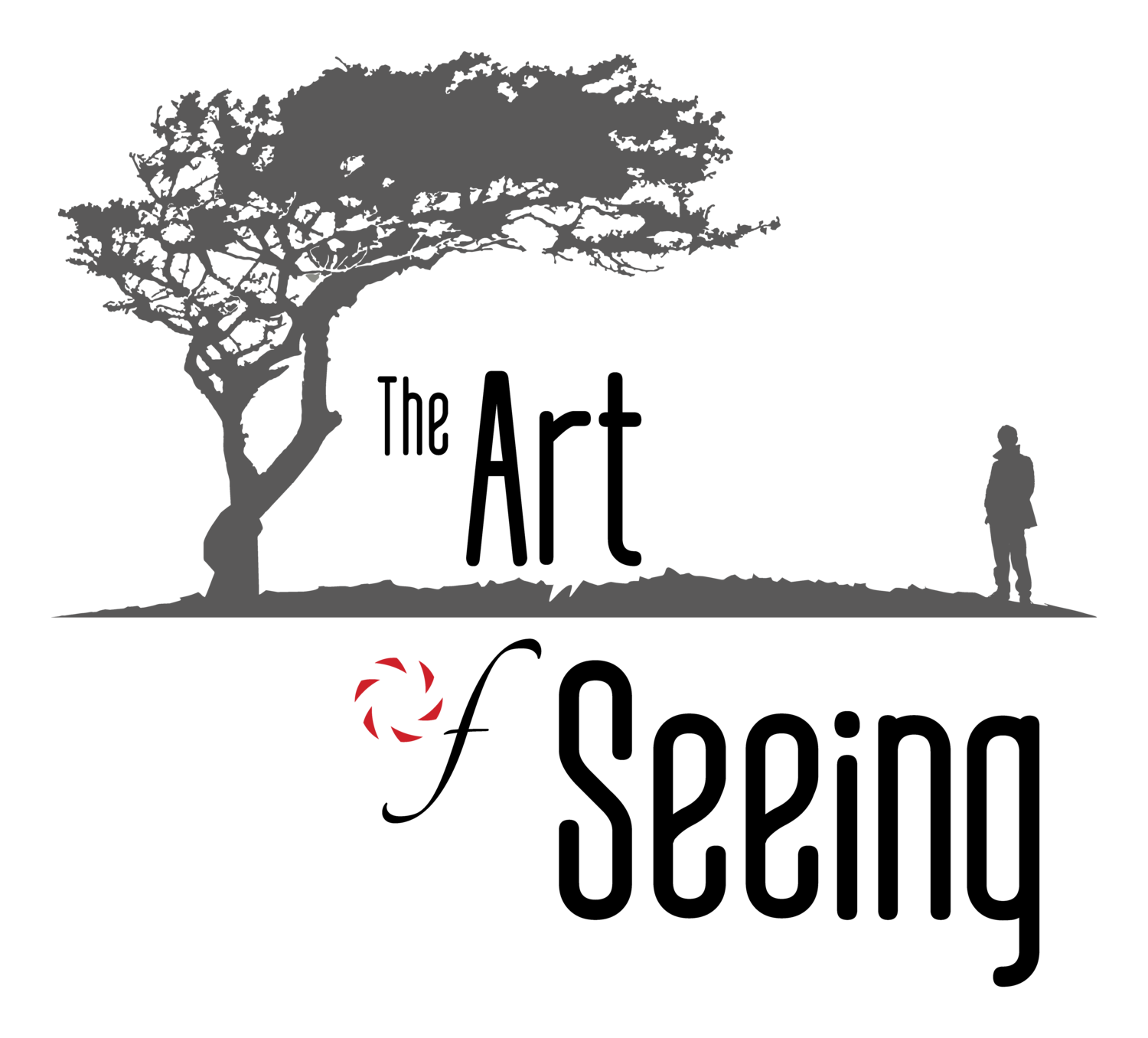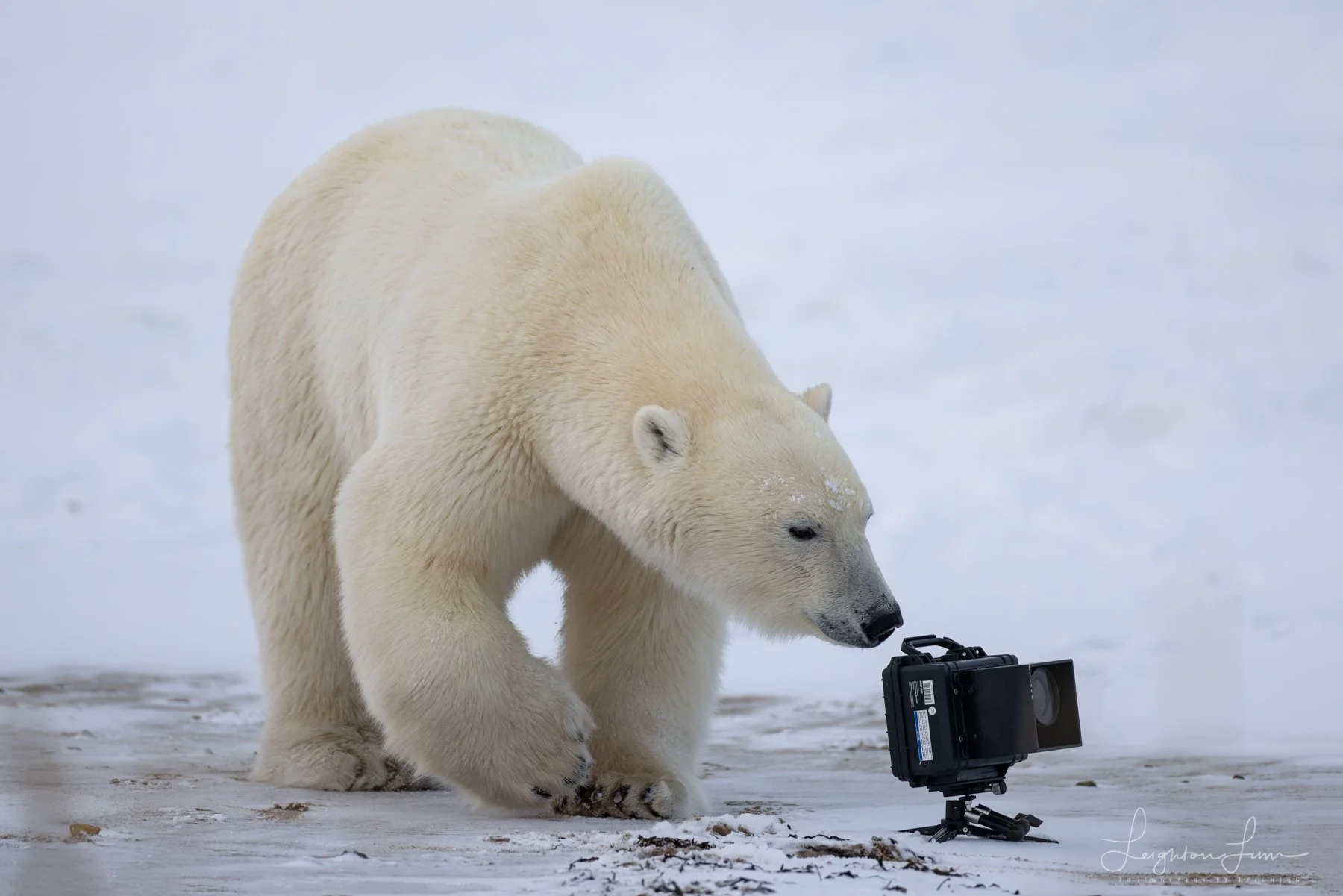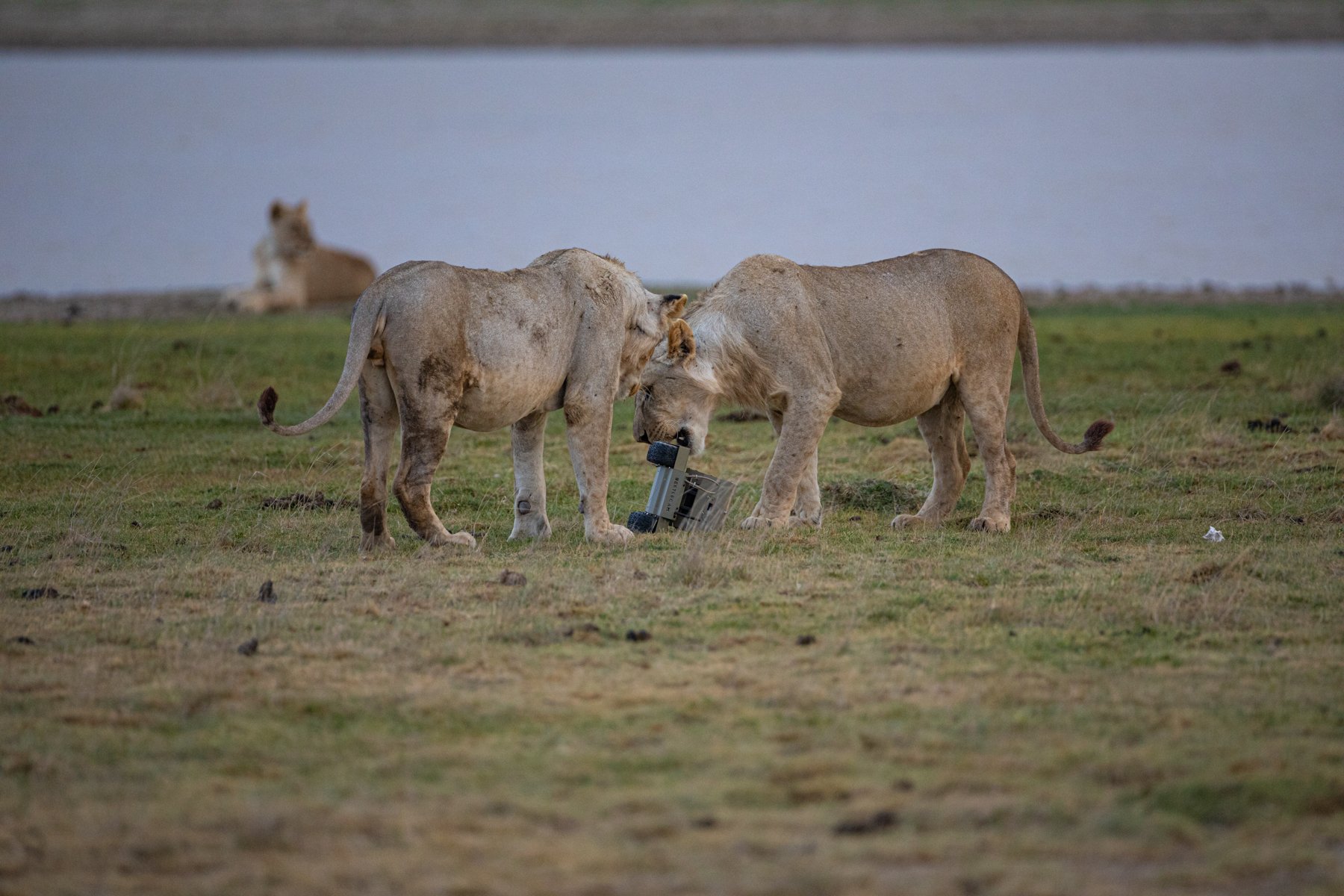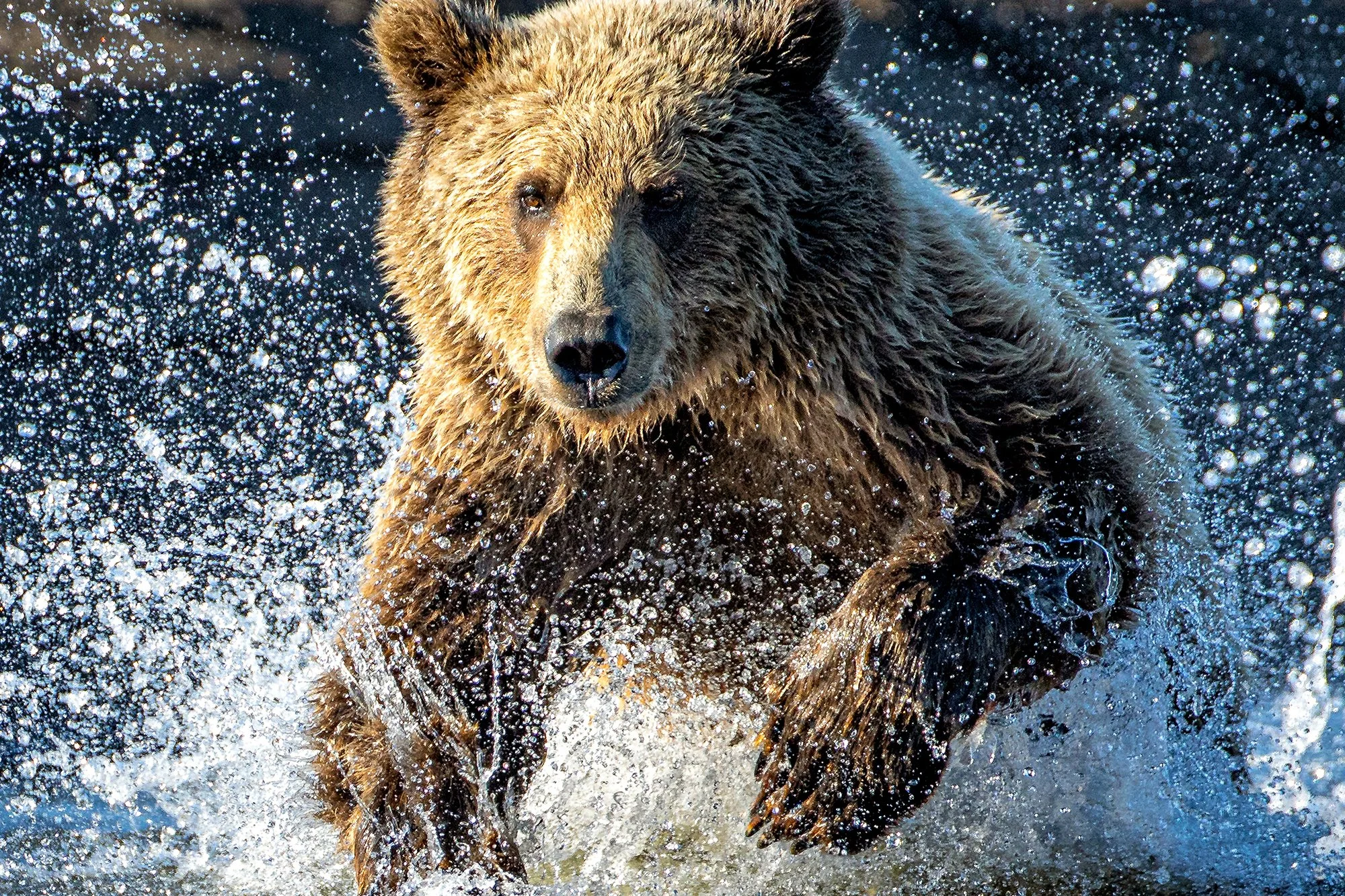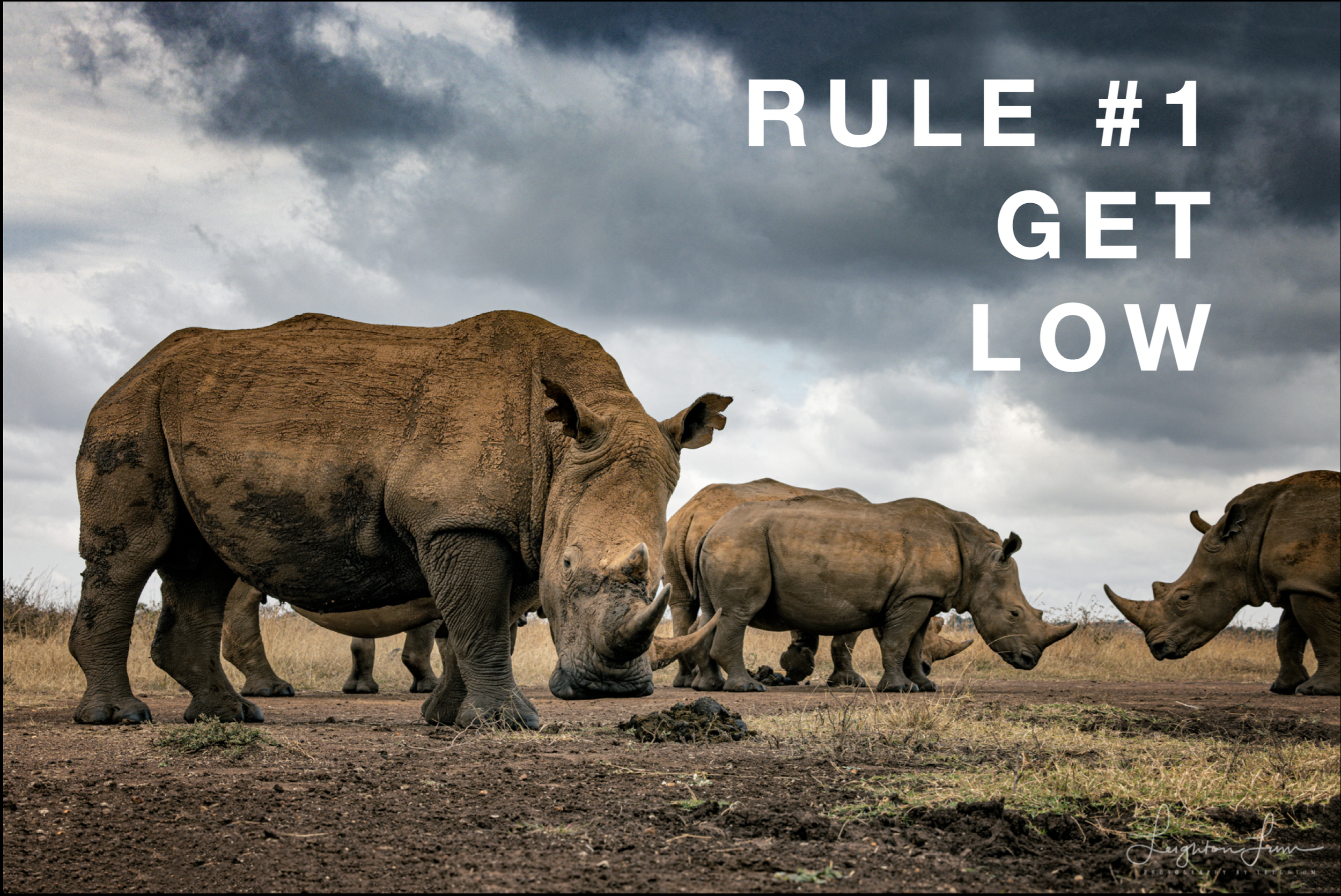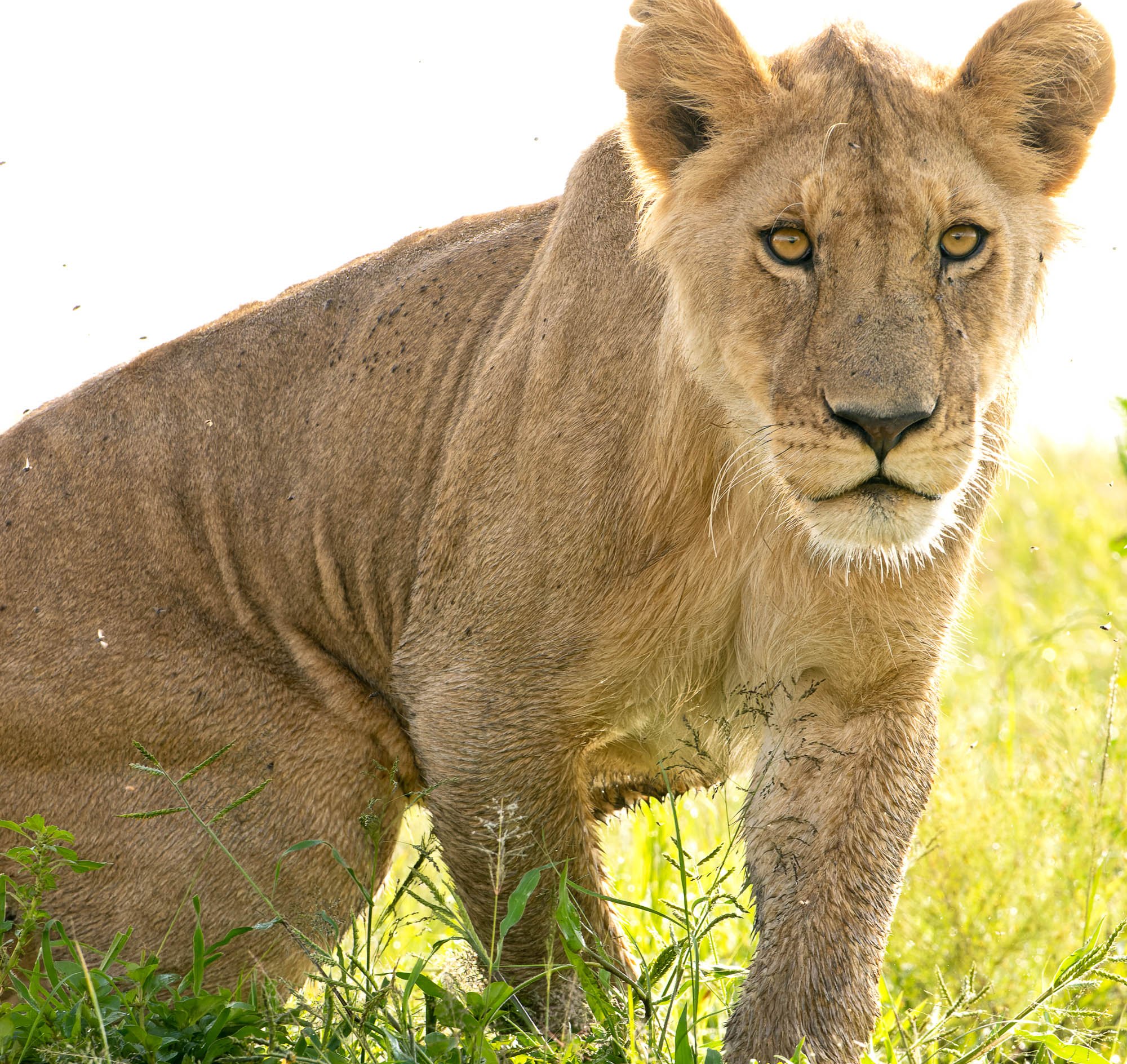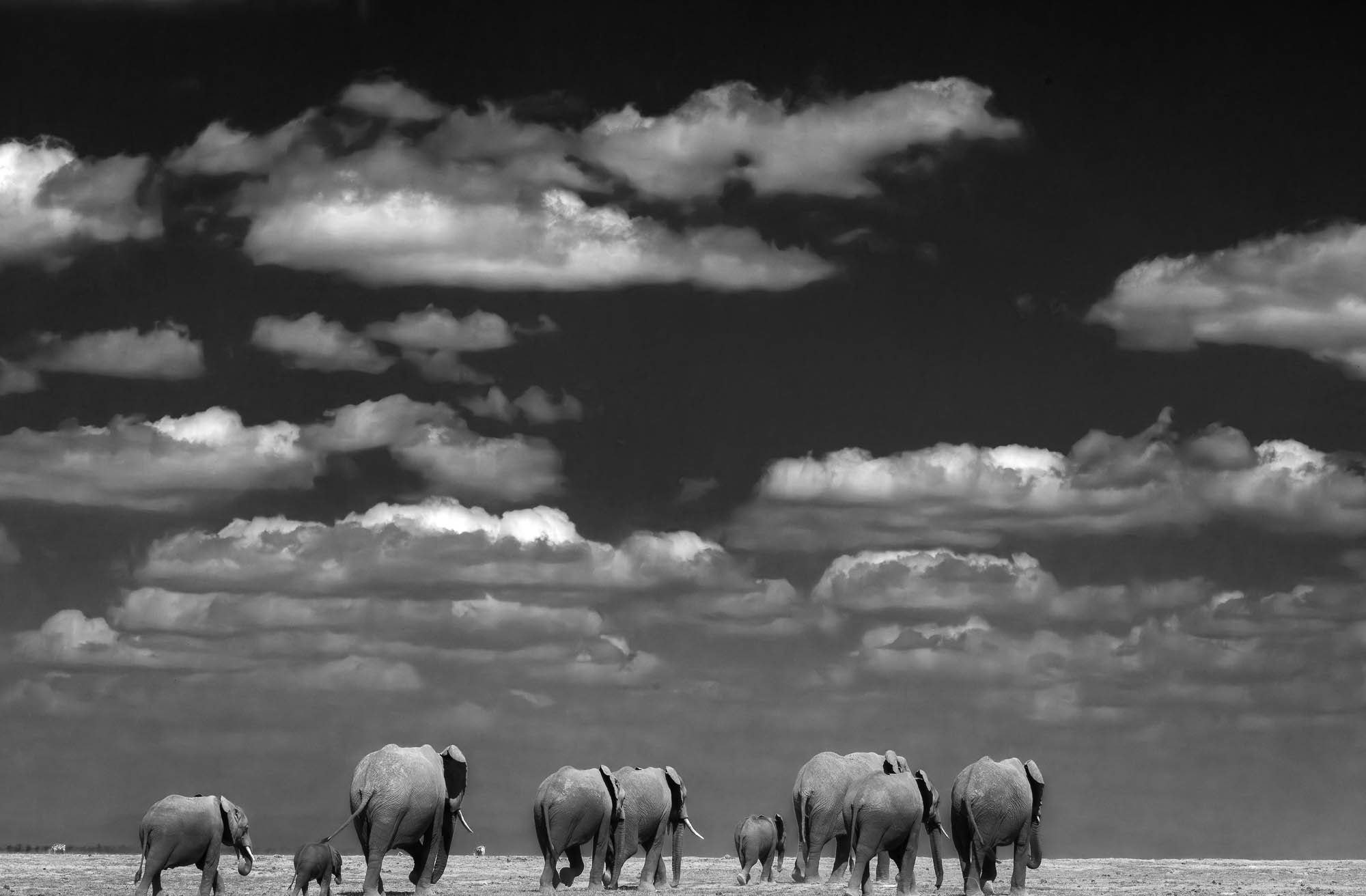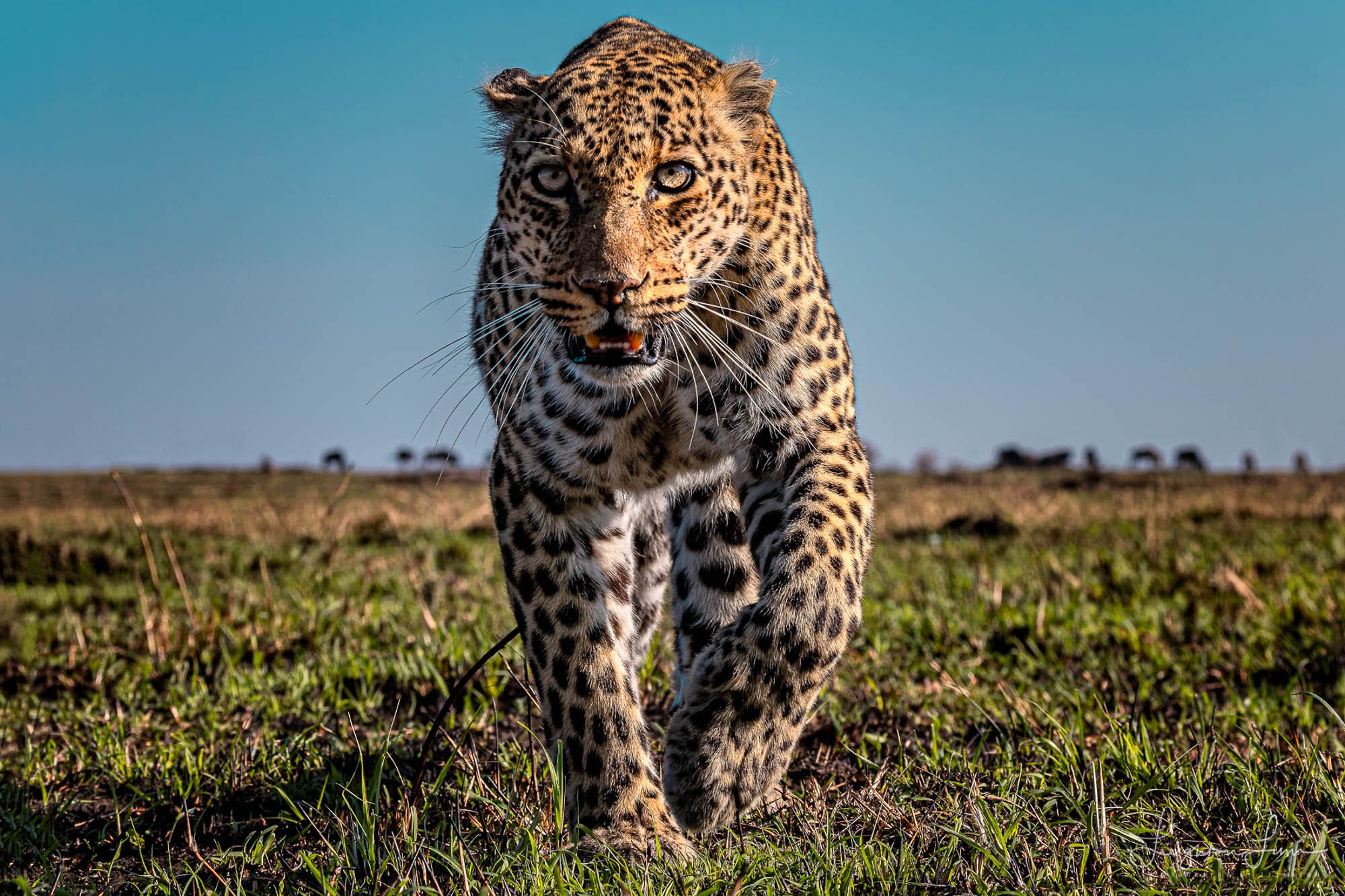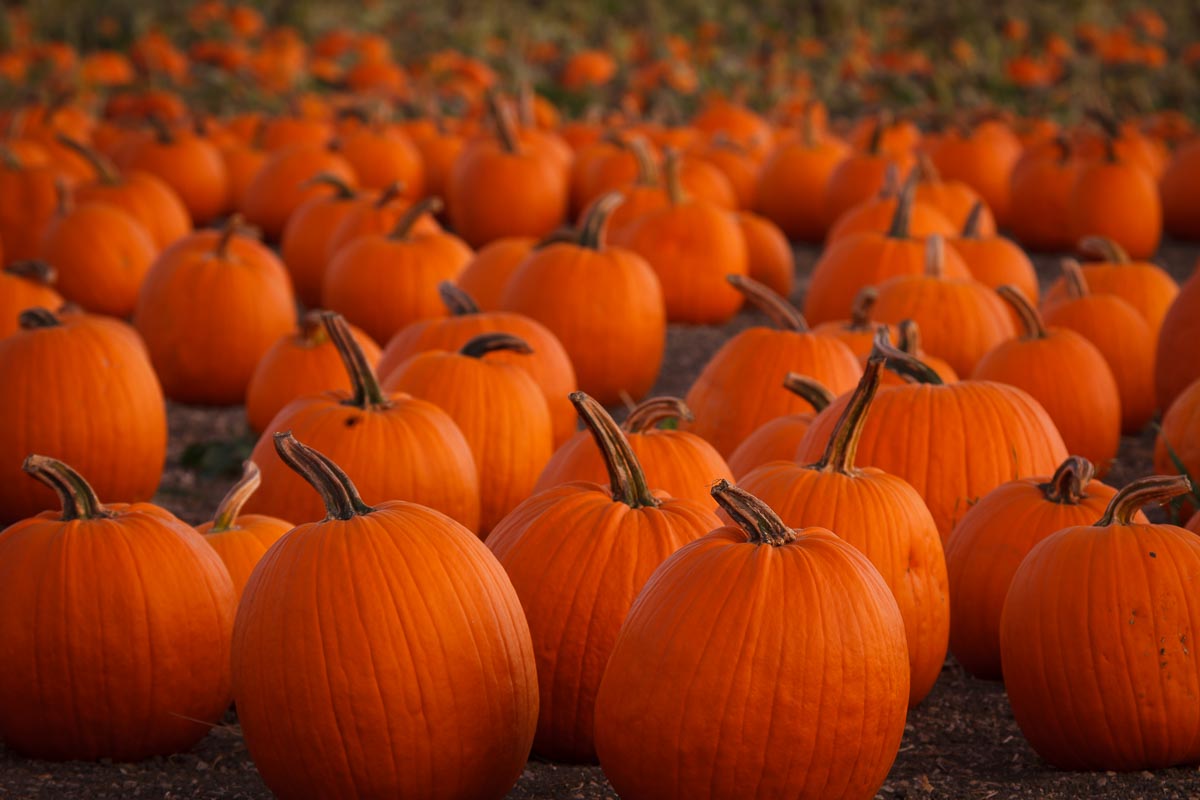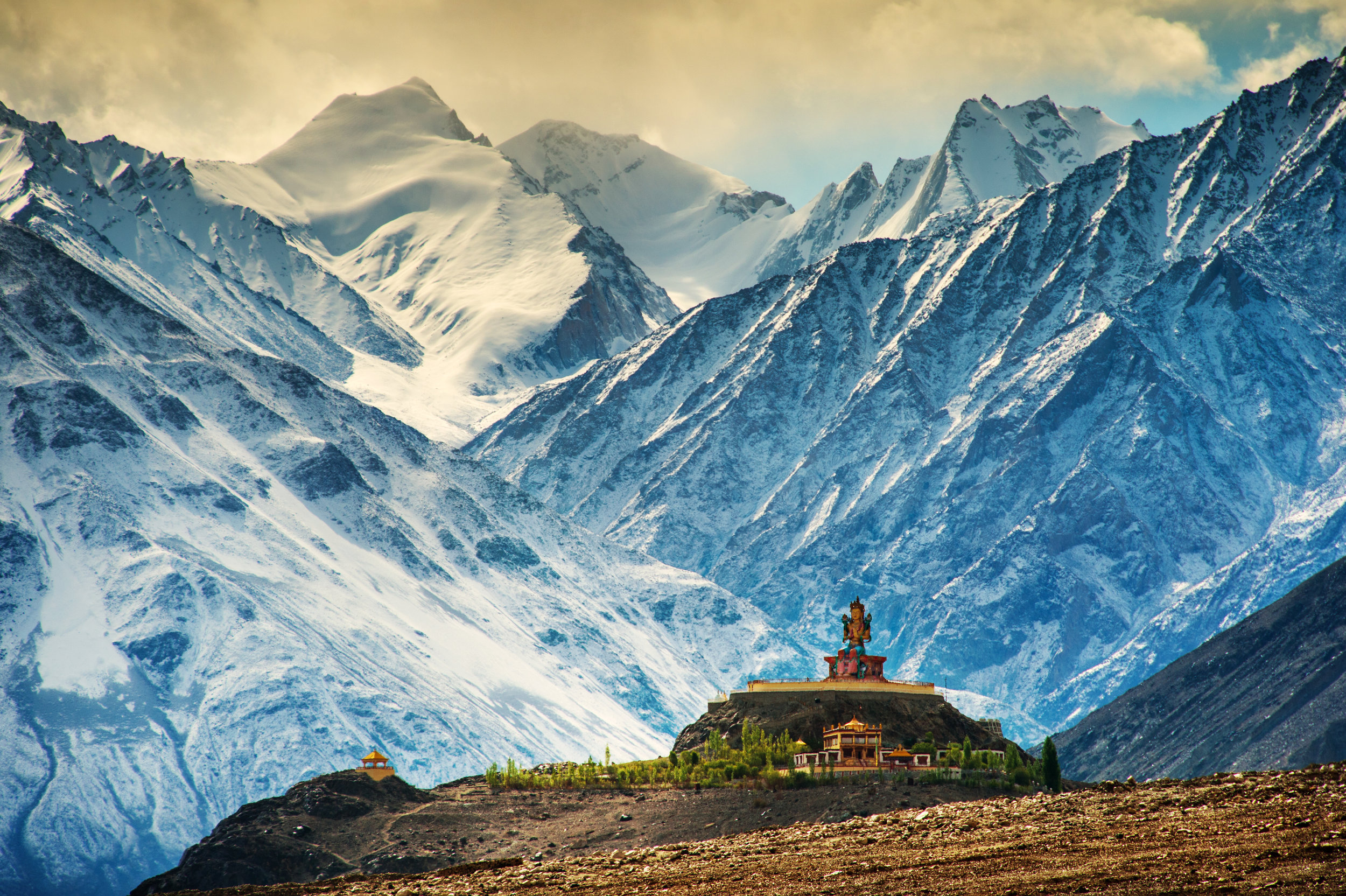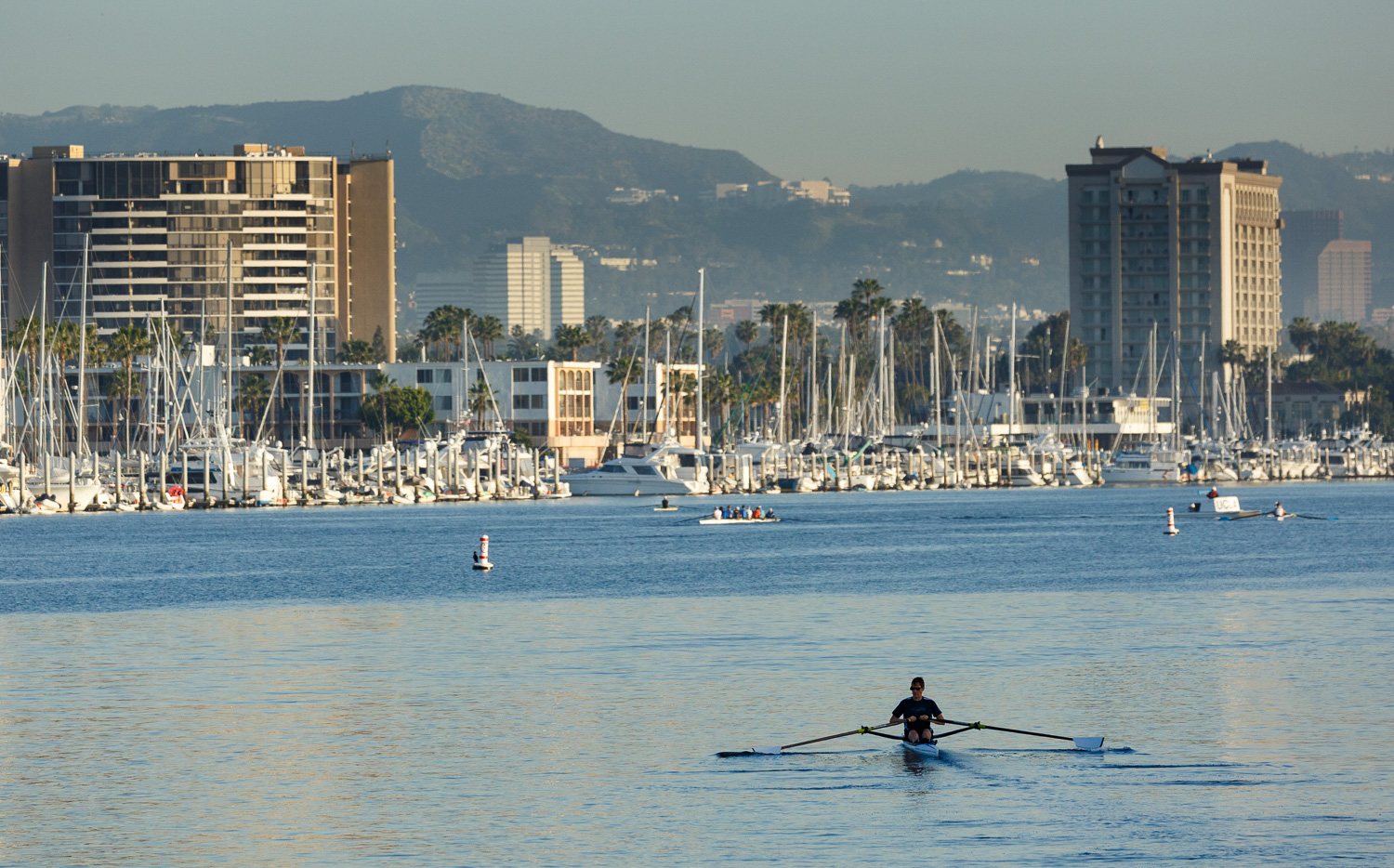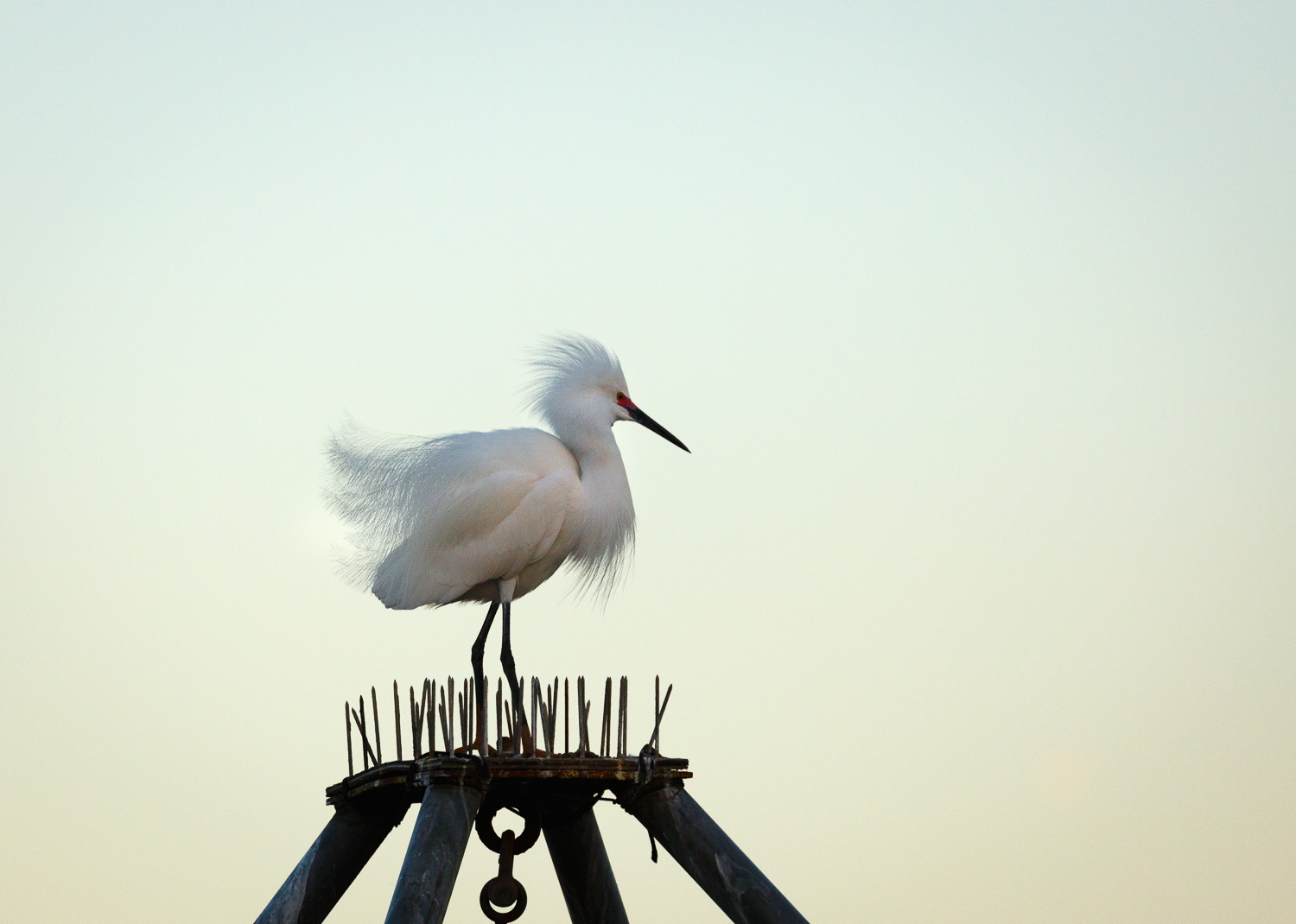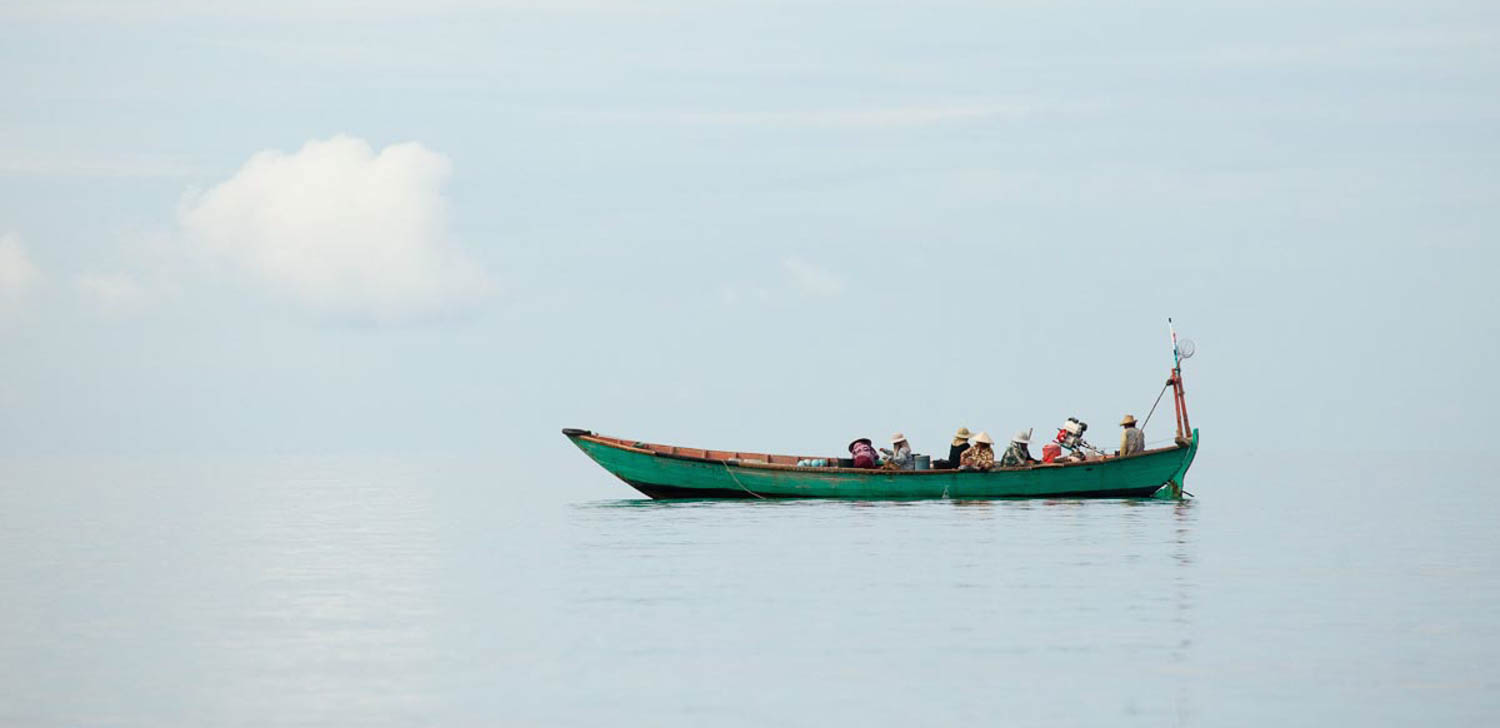
Insights and musings about photography and the creative process
How Blue Balls Helped Me See the Light
Sadly, my alma mater, the Brooks Institute of Photography, is no more. But while it existed, it was one of the premier institutions of photography education, and a few foundational assignments at Brooks achieved legendary status among the student body: The Grey Box. Black Glass. The Mission Shot. Each is deceptively simple at first glance, yet fiendishly designed to expose the slightest flaw in your understanding or execution of the knowledge they were meant to impart.
The infamous Brooks Institute Blue Balls
Sadly, my alma mater, the Brooks Institute of Photography, is no more. But while it existed, it was among the premier institutions of photography education. A few foundational assignments at Brooks achieved legendary status among the student body: The Grey Box. Black Glass. The Mission Shot. Each deceptively simple at first glance yet fiendishly designed to expose the slightest flaw in your understanding or execution.
One I’ll never forget—both because of what I learned and its title—was "The Blue Balls". Brooks instructors were crafty, but they also had a sense of humor.
Decades have blurred the details, but the core memory remains clear: carrying around a contraption made of a racquetball and a shiny blue Christmas ornament, mounted on rods and connected by a piece of 2x4.
Our task was to photograph this rig under various lighting conditions: full sun, cloudy days, open shade, window light, etc. Afterwards, we recorded our observations in another Brooks icon, the Comp book, describing in painful detail the qualities of the highlights, shadows and transitions.
Both balls were blue, hence the name, but their color had nothing to do with the point of the assignment. This odd rig was a lesson in paying attention. Admittedly, I didn’t appreciate the value of the exercise at the time – ok, my classmates and I thought it was Dumb with a capital D. But hindsight – as it so often does – has enlightened my perspective. Paying attention taught me to see beyond light and dark and notice the nuances of texture, transitions and mood.
Blue balls in Sunlight, Shade, Window Light & Cloudy lighting. Photos: © Google Gemini?
Becoming a Connoisseur of Light
The more you study a subject, the more you become aware of its subtleties.
The average imbiber’s ‘tastes good’ is probably quite different than a sommelier’s experience of the tannins and terroir in a sip of fine wine. I’m no birder, but learning a few bird-watching basics expanded the world of ‘little brown birds’ to a universe of sparrows, juncos, and chickadees. Dentists can’t help noticing coffee-stained teeth and receding gums.
What’s your area of expertise? What do you see that a layperson never notices?
It’s the same with light – the more you observe, the more you pay attention, the more you see.
Brave New World
It’s embarrassing how long I’ve been meaning to write this article. So many distractions, so many excuses. So many hours searching for the exact shade of blue ornament of my memories. Procrastination is a wonderful thing! 🙄
But this year would be different. A trip to Home Depot for grey paint and dowels. Racquetballs and ornaments from Amazon. The writing would begin as soon as I built that Blue Balls contraption!
But then I thought, what about AI?
All of the Blue Balls images in this article were generated by Google Gemini from a description I typed. What do you think? Did you suspect? Now that you know, can you tell?
Obviously, I think the AI “photographs” are usable for my purposes. The initial image Gemini produced is pretty much the exact picture I envisioned. But what really impressed me were the variations it came up with based on the different lighting conditions I described. There's no doubt Gemini understands the properties of light and how it reacts with different surfaces.
It made me think, is AI the ultimate tool for learning or teaching photography?
Is AI good or bad for photography, for humanity? A dream or a nightmare? These are questions for another time and a higher pay grade.
All I know is AI is here and we’re living in a Brave New World.
The Lexicon of Light
Learning the language and terminology of the subject you’re studying is always helpful.
Eye-line, rufous, and malar weren’t in my vocabulary before I started paying attention to birds but knowing these words helps me quickly distinguish similar species.
When it comes to light, some words photographers should be familiar with include:
Specular – hard light, the sun on a blue-sky day. It creates bright highlights, dark shadows, and sharp transitions. Models look good in hard light; soft light is more flattering for mere mortals. Grand landscapes in hard light rarely inspire, they just make you want to squint.
Specular can also refer to the shiny surface quality of things like the Christmas ornament, cars, jewelry, or a still mountain lake. The key to photographing specular objects is understanding you’re really photographing the reflection. That's why your car looks amazing after a wash—you're really admiring how well it reflects the world around it.
Diffuse – soft light, cloudy days or shade. Diffuse lighting results in less contrast, softer transitions. Window light is considered diffuse as long as the sun isn’t streaming directly through it. It’s a portrait photographer's secret weapon and why we see so many Instagram shots by the café window.
Ready to take off the training wheels? Seeing the subtleties of Contrast & Color is where even experienced photographers often struggle, especially when it comes to post processing their images. My fellow Brookies & I were ‘blessed’ with merciless instructors and endless repetition. But we lacked the benefit of YouTube and the instant feedback of digital photography. You don’t need a formal education in photography to learn these lessons. But you do need to pay attention…and practice.
Your Teacher Awaits
Lessons From Your Kitchen Blender
I’d love for you to join us on one our photography adventures, but the truth is you don’t need to go anywhere to learn about light. After all, light is everywhere. You don’t even need a camera. You just need to pay attention.
I can’t help noticing whether its finches or towhees visiting our feeder nor the way the light falls on the face of the person I’m talking to nor the choices the cinematographer made in the movie I’m watching.
You might notice the beautiful way the early light illuminates the blender you use to make your morning smoothie.
Will noticing make you a better photographer? I think so, but what I can promise is that noticing light will make your life experience richer. It’s what I call the Gift of Seeing. But that’s another topic for another time.
So start small. Take a moment to notice the light in your kitchen (or bedroom or backyard) tomorrow morning. That's your Blue Balls assignment.
Try it, you’ll See. 😉
15mm for Wildlife Photography?
In our Africa workshops—and in just about every conversation we have about photographing wildlife—we’re always preaching one thing: get low. Getting down to the animal’s eye level transforms your photos. Suddenly, you’re no longer just a bystander…
In our Africa workshops—and in just about every conversation we have about photographing wildlife—we’re always preaching one thing: get low. Getting down to the animal’s eye level transforms your photos. Suddenly, you’re no longer just a bystander; you’re in the scene. The background comes alive, the world feels bigger, and your subject feels more intimate, more powerful. It’s humbling and thrilling all at once—because when you’re eye to eye with a lion or a leopard, you realize who’s really in charge out there.
So… what if we took it a step further? What if we went wide? A wide-angle lens, say a 15mm, might not be the first thing that comes to mind for wildlife—but it can create some seriously jaw-dropping perspectives. When used creatively, a wide lens brings the environment and the animal together into one storytelling frame. You’re not just photographing the subject; you’re photographing the moment, the habitat, and the feeling of being there.
Now, before you crawl up to an elephant with a 15mm lens (please don’t), let’s talk about how to pull this off safely. Low wide-angle wildlife photography is where creativity meets engineering. Camera traps, wireless remotes, and even small remote-controlled vehicles can help you capture that ultra-close, wide perspective—without putting yourself in harm’s way. This is where photography turns into a bit of mad science: experimenting, adapting, and finding clever ways to make the impossible shot possible. It’s challenging, it’s exciting, and it’s the kind of photography that keeps you up at night thinking, what if I tried this next time…?
Of course, ethics always come first. Wide-angle wildlife photography demands patience, respect, and a deep understanding of your subject. Never chase, harass, or interfere with wildlife—ever. The animal’s safety (and comfort) must always come before the shot. Success comes from observing behavior, learning patterns, and working with a skilled guide who knows the local animals: which ones are bold, which are shy, and when it’s safe to approach. When you combine knowledge, patience, and a bit of luck, that’s when magic happens. The kind of once-in-a-lifetime image that stops people mid-scroll.
And finally—have fun. Stay safe. Don’t be afraid to fail (because, trust me, you will… a lot). The hit rate for this kind of photography is low. You might come home with 99 near-misses before you get the one. But when you do, it’s pure gold. Wide-angle wildlife photography is high-risk, high-reward, and absolutely worth it for those willing to push the boundaries. After all, if you’re not a little nervous, you’re probably not trying something new.
Beyond Animal Portraits: Elevate Your Wildlife Photography by Leighton Lum
Whether you're off to some distant corner of the globe or clicking closer to home, small shifts in your approach to wildlife photography can unlock new levels of creativity and impact.
Whether you're off to some distant corner of the globe or clicking closer to home, small shifts in your approach to wildlife photography can unlock new levels of creativity and impact. Here are a few of my favorite insights - earned through countless hours in the field - to deepen your connection with wildlife and transform your photos into visual stories that go beyond mere documentation.
Let Light Be the Story - Great wildlife photography isn’t always about the wildlife. Sometimes the critters play second fiddle to light itself. Photo • graphy, after all, literally means ‘to write with light.’ Sun rays piercing storm clouds, golden reflections off wet feathers, or the dramatic interplay of light and shadow created by backlighting - these fleeting conditions can transform an image from mundane to magical. Become a connoisseur of light and look for opportunities to make light the star attraction.
Understanding Animal Behavior – luck plays a role, but compelling wildlife images are more often a result of insight than chance. Recognizing subtle cues—a penguin about to preen, an albatross lifting into flight, a grizzly poised to lunge at a passing salmon—allows you to anticipate moments rather than react to them.
Embrace the Elements - rain, wind, cold, freezing sea spray - Nature often delivers less than comfortable conditions, but that’s where the drama lies. ‘Bad’ weather challenges both you and your gear, but it also gifts you with unforgettable images: penguins huddled in a storm, sea mist swirling over volcanic cliffs, animals enduring a rainstorm. For me, there’s nothing more depressing than a bluebird day. Nature never waits for perfect weather, and neither should you.
I hope these ideas have sparked new ways of thinking about your craft. The wild has so much to teach us—if we slow down, pay attention, and embrace the unpredictability. Let light guide you, let behavior reveal the story, and let the elements shape your vision. Most of all, get out there, put these ideas into action and make them your own. Wishing you bold adventures and beautiful light—happy shooting!
Regular Photography vs Low Angle Photography vs Low Wide-Angle Photography
We’ve previously written about the why’s and how’s of ‘going low’ when photographing wildlife, but let’s explore this idea even further...
We’ve previously written about the why’s and how’s of ‘going low’ when photographing wildlife, but let’s explore this idea even further.
Regular Photography
In this example, an uncluttered background and pleasantly out of focus background (i.e. ‘bokeh’) draws attention to the subject and helps separate it from its surroundings. Nothing wrong with this photo... but could it be better?
If the ground the animal you’re photographing is standing on happens to be visually interesting or exquisitely lit, there may be no need to change your perspective to capture a great wildlife image. But we’re usually not that lucky.
That’s the problem with ‘regular’ photography. By regular, I mean standing up, shooting from above photography. It’s hard to get anything but the ground behind the animal from this perspective and the ground is usually boring (monotone or just downright ugly dirt), busy or low-contrast relative to your subject - animals typically evolve to blend in, not stand out from their surroundings. Sure, you can zoom out to include sky and other landscape elements but if you look carefully, you’ll see that the horizon is above your subject so what’s actually behind the animal in the image is ground.
Low-Angle Photography
Lowering the camera allows you to have something other than the ground behind your subject. This can create separation/contrast or introduce elements that add variety and interest to your composition such as sky/clouds, trees, landscape features or just contrasting colors or tones. Direct eye contact, which often comes with being eye-level, can also make your photo more engaging by creating a stronger connection with the subject for the viewer.
Getting on your knees, or better yet, your belly, is the price to be paid but the results are usually well worth the little loss of dignity as you struggle back to your feet.
Low Wide-Angle Photography
The hardest but potentially most rewarding of the 3 options. This method of photography requires more pre-planning, a little more risk and a lot of luck. Chances of success are much lower, but the reward is a dramatic perspective with undeniable impact!
For this technique I typically put on my 15-35mm lens and try to position the camera in the path of my subject. Camera damage or loss is a real possibility. But when everything works, the images produced are often extremely impactful and quite different from your “average” photograph.
Trial and Error is key
A lot of failed attempts will occur before a successful shot.
Curious bear, but the camera is facing the wrong direction.
This bear fell asleep next to my camera. I waited for over an hour to retrieve it.
Success! Curious bear checking out my camera
You gotta risk it for the biscuit
Remember these are wild animals, and very powerful ones. Sometimes their curiosity can cause result in unfortunate consequences for your camera. You must decide if the rewards justify the risk – or at least find out if you’re insurance covers bear damage!
Protecting the camera. I made this contraption from a Harbor Freight “pelican” case and PVC...nothing fancy, but it works!
Keys to success with low wide-angle photography
Getting sharp focus on your subject’s eyes (not nose, ears, etc.) is always a challenge, but the ‘animal eye-focus’ capabilities of modern mirrorless cameras greatly increases your odds of success. It’s not 100% accurate, but produces more hits than misses. Even so, this type of photography requires a lot of patience and repetition.
You need a way to trigger the camera from a safe distance, especially when working with animals that are potentially dangerous. I personally use the Camtraptions trigger, but there are lots of options. One weakness of most trigger systems is the short wire connecting the receiver to the camera is easily damaged so it’s a good idea to carry a spare.
Observe animal behavior – knowing the typical behavior or habits of an individual will help you better you place the camera. With bears, some individuals are more curious or calmer than others. Some bears are more skittish and won’t go anywhere near the camera. Your guide is also a great resource as they’ve spent countless hours with these animals and know their typical behaviors and individual characteristics.
Keep trying - determination and repetition is the formula for success. You may not get it on the first try or the second but eventually one shot will work out! Knowing how difficult it is to get a shot like this makes getting the shot that much more rewarding.
Good luck and happy shooting!
Getting Down in Africa – Low Angle Photography Why & How
Rule #1 of wildlife photography is Get Low. But why? And how do you even get low when you’re confined to the inside of a safari vehicle as is almost always the case in Africa?
Rule #1 of wildlife photography is Get Low. But why? And how do you even get low when you’re confined to the inside of a safari vehicle as is almost always the case in Africa?
Why Go Low?
The change in perspective that comes with a low camera angle (subject eye level or below) can be helpful in many ways:
Eliminate busy, boring or low-contrast backgrounds - when photographing animals from above, it’s hard to end up with anything other than the ground as a background. While that’s not necessarily a bad thing if the landscape or light is interesting, shooting from near ground level gives you options, like having sky behind your subject. Predators and prey are also naturally evolved to blend into the landscape which is great for survival but not always helpful for pictures.
Create connection – direct eye contact creates a powerful connection with your subject but it’s harder to achieve from above - parts of the eye are often obscured by the shadow cast from the eyelid or brow. A low angle helps you clearly see the subject’s pupil and iris. The result is a subtle but noticeable increase in impact.
Something different - a very low perspective also adds interest simply because it’s novel – it’s not the usual way we view animals. It also increases your subject’s ‘gravitas’. If you want an animal (or person) to look bigger or more imposing, shoot from below.
Show me, don’t tell me
It’s easier to show than explain, so take a look at the example images in this post and linked gallery – hopefully the difference and benefits will be obvious.
Getting Down
Now that we understand some of the benefits of a low camera angle, it’s time to move on to how to accomplish it. My friend and often co-workshop leader, Leighton Lum, introduced me to his Low Angle Monopod method during my first trip to Africa and it’s responsible for some of my favorite images.
DISCLAIMER: Use this technique at your own risk! It involves sticking parts of your body outside the safety of the safari vehicle – don’t get so absorbed in taking pictures that you lose situational awareness. If a curious lion approaches too close, get all of yourself inside the vehicle immediately even if it means leaving your equipment outside temporarily.
Equipment – The Basic Rig
Camera –it’s possible to make this technique work with a dSLR, but a mirrorless body, especially one with an articulating screen and Animal Eye Focus capabilities are really what you want.
Lens – a medium telephoto like a 70-200 mm is our recommendation. A rotating collar mount is especially helpful so you can orient your camera right side up
Monopod– nothing too special here, most models will work but something lightweight will help minimize arm fatigue. A ball head is optional but keep it lightweight as well.
Remote Release or Camera App – you’ll need a way to trigger your shutter. Every camera manufacturer makes a wireless remote release for their cameras and there are plenty of third-party options as well, all relatively inexpensive. I really like these remotes by JJC for Nikon, Canon & Sony because they work via Bluetooth, eliminating the need for a receiver/connecting cable (requires a camera w/Bluetooth capability). Your camera manufacturer’s mobile app can also serve as your remote release but we’ve seen mixed results – sometimes there’s a slight delay between pressing the button in the app and the actual camera shutter click.
The Technique
Establish a connection between remote release and camera following the instructions of your remote release hardware or app.
If using a ‘traditional’ remote release, mount the receiver in the camera’s hot shoe and connect the cable from the receiver to the appropriate port on the camera.
If using Bluetooth remote or camera app, create a wireless connection between the remote trigger and the camera according to instructions provided
Set Autofocus – Enable Animal Eye Focus and use it conjunction with the Wide/Large area or Full Screen option in AF area setting if possible.
Rotate Lens Collar – so that the mount foot is facing up and attach monopod
Tilt your LCD screen up so it’s facing up and viewable from above
Test – make sure everything (camera and remote release or app) is turned on and give it a try. Make sure you can activate autofocus and fire the shutter using your remote release or app. Practice passing the rig through a vehicle window, lowering the camera, finding and focusing on your subject, and firing the shutter. Adjust your zoom as necessary and leave plenty of room to crop and straighten crooked horizons.
Be patient and keep practicing. It’s normal to feel clumsy at first and your results may be less than stellar. This will improve with practice.
Note: if you use Back Button focus and have disabled Shutter button AF activation, you may need to re-enable it
Randall's rig
Options & Finer Points
Look, listen to your eyes – the low angle technique is a great arrow to have in your quiver but it’s not always the right choice for every image.
Switching between low angle and regular shooting is time consuming. If possible, it’s nice to dedicate a second body to low angle shooting.
The cable connecting your remote receiver to the camera is easily damaged. Carry a spare and be careful not to pinch or stress the cable connections.
In bright daylight the monitor can be hard to see. An LCD shade might help, but also keep in mind it’s not necessary to see every detail - you’re relying on the camera’s AF to achieve focus and seeing less detail is often helpful for composition.
Next level – Randall Ball’s new and improved version of the low angle rig. We’ll save the details for another post but leave it to a Cajun to take things up a notch.
Have fun, be safe, good luck!
The G.O.A.T.
Our 2018 Scouting Mission to Ladakh (Indian Himalayas) was the epitome of epic adventure travel. Every day, we said it couldn’t get better. Every day it did. Tears ran down cheeks on the final night, as we stood on the roof of a thousand-year-old monastery photographing the Milky Way with the rumbling soundtrack of throat-chanting Tibetan monks.
A monk calls his brothers to Morning Prayer
“My favorite trip of all-time? It’s a question I’m asked often. I usually give some wishy-washy answer because it feels like I’m being asked to choose a favorite child. But it’s always Ladakh that comes to mind, all due respect to my other “children” - I love you all. ”
Our 2018 Scouting Mission was the epitome of epic adventure travel. Every day, we said it couldn’t get better. Every day it did. Tears ran down cheeks on the final night, standing on the roof of a thousand-year-old monastery photographing the Milky Way with the rumbling soundtrack of throat-chanting Tibetan monks.
Little things like a pandemic have kept me from returning, but I’m finally going back in April 2024. Come with me and let me show you why Ladakh is my Greatest Of All Time!
What & Where is Ladakh?
Ladakh is a mountainous region in far northern India bordering Tibet. The Himalaya mountain range dominates much of Ladakh’s territory. The history, people, and culture here are more closely associated with Tibetan Buddhism than the rest of Hindu-dominated India. Indians often describe Ladakh as, “Heaven on Earth.”
What’s it Like in Ladakh?
Wild, Remote. Other-worldly. That’s how my first visit to Ladakh felt. The biggest mountains in the world make for some truly grand landscapes. Vast spaces, really vast and starry skies that make you feel really small. Monks and nomads living lives from another time. There are not many places like this left. I wonder how it will feel when I return. I wonder what I missed the first time. I wonder what’s changed.
Show Me, Don’t Tell Me
I get it, we’re photographers, shut up and show me the pictures. Here you go: Ladakh Photo Gallery
2024 Trip info
Want to See and experience this magical land for yourself? Click here for full details about our April 2024 Ladakh Himalayan Adventure photography workshop
The Classic
2+ hours of steady pre-dawn uphill hiking by the light of our headlamps. An in-the-dark puma (mountain lion) encounter on the trail that elevated our heartbeats yet another notch. Hunkering down in the boulders against the whipping wind, wearing every stitch we had, fumbling with camera controls and tripods waiting for first light. I'll cherish these memories more than any resulting photographs.
Iconic - first Light on Mt. Fitzroy
2+ hours of steady pre-dawn uphill hiking by the light of our headlamps. An in-the-dark puma (mountain lion) encounter on the trail that elevated our heartbeats yet another notch. Hunkering down in the boulders against the whipping wind, wearing every stitch we had, fumbling with camera controls and tripods waiting for first light. I'll cherish these memories more than any resulting photographs.
Not the actual cat we encountered, but pretty much what we saw (image from my neighbor’s trail cam).
Secret Falls is hardly a secret anymore. This oft-repeated image of the falls with early light on Mt. Ftizroy has become 'the shot' for many photographers to bag on the Argentina portion of their Patagonia tour. It's a classic for a reason, but for me, there’s little joy in recreating any famous shot…it just doesn’t feel creative.
But the journey, the adventure of getting there, especially this time…that’s a different story. Someone once told me, “photography gives us an excuse to do crazy things.” I thought about that as we descended, pausing repeatedly to allow throngs of more sane, post-breakfast uphill hikers to pass. More crazy, please.
Is India Your Cup of Chai?
I love India. Photographically, it’s been a personal goldmine – the source of more ‘portfolio-worthy’ travel images than any other destination – but I also find the culture, the history, Hinduism and all its offshoots endlessly fascinating as well.
But India might not have the same appeal for everyone, as I unexpectedly discovered.
Worth a watch: photographer Joey L in Varanasi, India creating images for his series, Holy Men
Chai wallah in Varanasi
Varanasi, India: Beyond is available on YouTube, Vimeo and Joey L’s website
I love India. Photographically, it’s been a personal goldmine – the source of more ‘portfolio-worthy’ travel images than any other destination – but I also find the culture, the history, Hinduism and all its offshoots endlessly fascinating as well.
But India might not have the same appeal for everyone, as I unexpectedly discovered. While researching for my first trip to India I ran across the documentary, “Varanasi, India: Beyond” and instantly added Varanasi on the Ganges to my itinerary. Ancient, exotic and the epicenter of the Hindu religion, this film confirmed that Varanasi was exactly the kind of place I dream of exploring. I’d been planning a solo scouting mission but started thinking it might be nice to have some company. So, I hatched a plan to recruit my wife and my friend David as travel companions. I invited David over for dinner and afterwards, I casually mentioned this fascinating India doc I’d come across and hit play. I sat back confident David and my wife would both be begging me to come along once they got an eyeful of Varanasi’s ancient buildings, twisted lanes and riverside stone terraces (‘ghats’) teeming with throngs of devout pilgrims accessing the blessed waters of Mother Ganga, the Ganges river. Even more captivating were the actual subjects of the documentary, religious ascetics…holy men, known as Sadhus and Agghori’s. As the credits rolled, I turned to my companions and said, “now doesn’t that just make you want to go there and see it for yourself?” After an unexpected silence, David looked me straight in the eyes and answered for both, “Ken, not no, HELL NO!”
I was shocked….and humbled. India can be a bit…gritty, it’s true, especially for western eyes. But that’s reality and isn’t that so much more interesting than some sterile manicured resort? Obviously, I had my answer, at least as far as my wife and friend were concerned.
What about you? Add Varanasi, India: Beyond to your watchlist – it’s free and I promise you’ll find it fascinating as a photographer regardless of your ideas about India. It follows photographer Joey L as he creates images for his series, Holy Men. Let me know afterwards if you add India to the bucket list or decide to save it for another lifetime. If India seems like your cup of chai, get in touch or join us in March 2023 for our next Colors of India photography adventure.
Happy Holidays, Everyone!
Introducing Randall Ball
Many more moons ago than either of us care to admit, Randall & I started our first class together at the Brooks Institute of Photography in Santa Barbara, CA. I was a…
Many more moons ago than either of us care to admit, Randall & I started our first class together at the Brooks Institute of Photography in Santa Barbara, CA. I was a greener than green photo-newbie, but Randall came to Brooks as a seasoned combat photographer with the US Marine Corps. We bonded over our struggles with Brooks’ fiendishly difficult assignments and long hours in the darkroom….and maybe a beer or two (or three).
After Brooks, Randall returned to his home state of Texas where he built a successful commercial photography career producing images for companies like American Express & United Airlines and publications including Harper’s Bazaar & Texas Monthly.
Randall’s first trip to Africa reignited his passion for image making, which had begun to fade after too many years in the studio. He also discovered a love and talent for teaching. Randall is currently based near Houston, TX and where he is an Adjunct Photography Instructor.
As happens nowadays, Randall & I reconnected through social media a few years back, just as my travel calendar was reaching maximum overload. I’m very grateful that Randall began leading workshops for Art of Seeing Photography Adventures in 2021. This year, Randall will lead 3 Art of Seeing workshops including our latest offering, Kenya: Fangs & Tusks. Click the buttons below to learn more about Randall and see examples of stunning work.
Kenya: Fangs & Tusks with Randall Ball Oct 15–24, 2022
Africa's apex predators – Lions, Leopards and Cheetah – up close and personal in two of Africa's most iconic parks: the Masai Mara & Amboseli National Reserves. Photograph some of the last…
Our latest workshop is Wild! All images ©Randall Ball
Africa's apex predators – Lions, Leopards and Cheetah – up close and personal in two of Africa's most iconic parks: Kenya's Masai Mara & Amboseli National Reserves. Photograph some of the last big tuskers on earth with the stunning backdrop of Mt. Kilimanjaro. Every aspect of this trip is designed for passionate photographers by passionate photographers from special off-road permits that allow us to get extra-close to luxurious accommodations with Wifi and “editing suite’.
$500 off for Art of Seeing Subscribers!
A special offer for Art of Seeing newsletter subscribers and Facebook group members: Register by Feb 28 and receive $500 off the cost of this workshop. Enter “Early 500” in the Remarks field of the registration form and a $500 credit will be applied to your balance due on June 15, 2022.
What Africa Teaches the Heart
My first Africa safari ended some time ago but I’m still struggling to process the experience, not to mention the over 8,000 photos I captured there! But it’s hard. Not because of the mountain of images to plow through, but because…
Lion in lovely light
Every Expectation Exceeded
My first Africa safari ended some time ago but I’m still struggling to process the experience, not to mention the over 8,000 photos I captured there. But it’s hard. Not because of the mountain of images to plow through, but because Africa exceeded my expectations in every way. From the mind-blowing quantity and diversity of wildlife everywhere – herds of elephants or giraffes around every turn, thousands of antelope and gazelle, dinosaur-sized birds flying around like pigeons, uncountable numbers of zebra and wildebeest - to the unbelievable quality of the photo opportunities – lions in sublime light, cheetahs so close they sent me scrambling for a wide-angle lens, observing the drama of the hunt from start to finish multiple times - every day had our group convinced that it just couldn’t get any better. But it did. Right up until the final morning when we witnessed two male lions chase down and kill a hyena with savage vengeance. In the aftermath, there was no doubt that this act was more about hatred than hunger.
But even then, it wasn’t over. Like a conductor bringing her audience down from the climax of a symphony, the final movement began with the slow-motion swaying of giraffes in mock battle, the entire ballet mirrored in a pool of still water. If I wasn’t busy focusing and firing frames, I would have cried. Minutes later we were at the airfield, waiting for the plane that would begin our journey home.
Just Do It
My first trip to Africa won’t be my last. I’m thrilled with the shots I got, but the misses are going to eat at me for some time. But honestly, photography is just an excuse to experience moments like these. I’m already planning another crack at the Great Migration for February 2021 with fellow photo workshop leader, Leighton Lum. But I’m pretty sure that will only mark the first of many return trips to this wildlife nirvana. If you share my passion for observing and photographing the natural world, come to Africa. Come with us, come with someone else, come on your own. Find a way, plan it, and do it. I promise you won’t regret it.
Tuskers & Kilimanjaro
Changing the Story
If you can, bring a child. Because it will be their generation that decides the fate of places like this. Pessimism about the survival of the natural world abounds and it is justified. We’ve lost so much already. But there’s also reason for hope. To save a thing, you need to first fall in love with it. My generation fell in love with the big black eyes of seal pups on the ice, the idea of oceans with whales, and seeing the majestic symbol of our nation, the bald eagle, outside of a zoo. Maybe these are isolated success stories and maybe it’s wrong to draw attention away from the battles still before us. But ideas are powerful...even stronger than fear. Fear freezes, but inspiration fuels action. Sparks are needed to ignite fires but we can’t count on YouTube and Xboxes to set young minds ablaze.
Before I stared out across the Serengeti, over the backs of a herd of wildebeest so vast I couldn't find its end even with binoculars, the stories millions of bison once roaming our Great Plains were just that, stories that lived in my head. After seeing the Great Migration with my own eyes, I understand in my heart what we once had and lost. We may never recover all that we’ve squandered but perhaps young hearts inspired by the sight of a world that once was will be foolish enough to try. And that might just be enough to change the story of life on this planet.
How to Holi
Like most people, the Festival of Colors first entered my awareness through pictures I came across on the internet & social media. After putting my eyeballs back in my head after the first time I saw those insanely colorful images, my first thoughts were: What is THAT?!?! WHERE is That?!?! and HOW do I get there?!?! I eventually made it to Holi and, for once, reality lived up to the hype. Maybe you’ve seen similar photos and asked some of the same questions. I’m going back to photograph my third Holi Festival in March 2020 (join me!), so I thought I would share some knowledge and lessons from my past experiences.
Photographing India’s Holi Festival of Colors
The World’s Most Photogenic Festival
Is India’s Holi Festival of Colors the most photogenic celebration on the planet? Answers to questions like this are obviously matters of opinion. Since I'm writing this article, you can probably guess my opinion, but then again, I haven’t made it to Carnival in Rio, Dia de los Muertos in Oaxaca, or Burning Man in the Black Rock desert…yet.
Like most people, the Festival of Colors entered my awareness through pictures I came across on the internet & social media. After putting my eyeballs back in my head the first time I saw those insanely colorful images, my first thoughts were: What is THAT?!?! WHERE is That?!?! and HOW do I get there?!?! I eventually made it to Holi and, for once, reality lived up to the hype. Maybe you’ve seen similar photos and asked some of the same questions. I’m going back to photograph my third Holi Festival in March 2020 (join me!), so I thought I would share some knowledge and lessons from my past experiences.
What is Holi?
This annual celebration of the arrival of Spring goes back nearly two thousand years and has multiple meanings and purposes. It is closely associated with the Hindu gods Krishna and Vishnu and has its origins in a mythical allegory about the triumph of good over evil. The chaos of colors we see every year on Instagram mostly happens on a single day, but the actual festival lasts about a week and includes many other traditions like the bonfire burning of an effigy and the sharing meals & sweets with friends and family.
At its culmination, enthusiastic revelers 'play Holi' with handfuls of colored powders – throwing, rubbing, and smearing vivid hues over everyone and everything. Holi is not a spectator sport. Participation is mandatory. Rich, poor, tourist or local, no one is exempt – not even sacred cows. But it's all in the spirit of celebration and good fun. In fact, another name for Holi is the Festival of Sharing Love.
Check out this article for more details about the history and meaning of Holi. Wikipedia also has a pretty good Holi page
When is Holi?
The answer to this question isn’t nearly as straightforward as you might expect. That’s because the dates of Holi change from year to year based on the Hindu calendar, of which there are several versions, and the full moon in early Spring. It’s a bit complicated and the truth is even most Indians couldn’t tell you the exact dates of the next Holi more than a few months out. This makes planning your Holi Festival photography trip a little challenging, but not insurmountable. Start by blocking out late Feb/early March on your calendar and keep googling ‘Holi Festival dates 20XX' By about 9 or 10 months out, a consensus will form. Wait until you see the same dates from at least 2 or 3 different sources before you book any flights. Yeah, I wish I could be more definite too.
Just to add a little more spice to your Holi curry, there is a very special version of Holi, Lathmar Holi, which occurs a week before the official 'Main Holi' color party. It happens over two days in two tiny villages, Barsana and Nandgoan, the historical hometowns of Lord Krishna and his beloved, Radha. Now here’s the pro tip and your reward for reading this far: Photographically, Lathmar Holi is where it’s at!
I’ve been to both, but I skip the better known Main Holi celebrations on my photo workshops and focus on Lathmar Holi because there are simply more and better photo opportunities there, IMHO🙏🏽. The light, vantage points, certain activities that only occur during Lathmar Holi, plus the fact that the color throwing revelry lasts two full days make it an easy choice for me.
Since they are spaced a week apart, there’s no reason you couldn’t attend both Lathmar Holi in Barsana/Nandgoan and Main Holi in Mathura/Vrindavan – if the Holi festival is the sole purpose of your trip. But there’s so much more to see in India. My recommendation is to shoot Lathmar Holi for two full days and then move on. It’s very likely that wherever you are on Main Holi day a week later, they will be playing Holi there too, so you’ll get another shot (pun intended) at it anyway.
Where is Holi?
These days, Holi is celebrated throughout India and beyond, but its roots are in northern India and that’s where you’ll see the biggest celebrations. Every Holi guide you read will tell you that the epicenters of the festivities are in the towns of Vrindavan & Mathura, both several hours drive from Delhi. This is true, these towns receive the most visitors, but as I mentioned, they are not necessarily the best places to capture the essence of Holi with your camera.
Barsana and Nandgoan are also in the general vicinity of Delhi. That’s why I say it makes sense to chose one and move on - you would have to stay around Delhi for over a week to catch both celebrations and there’s so much more to see in India. Whichever event you choose, the festivities will be focused around one temple in each town, usually the one dedicated to Lord Krishna. No need to ask for directions once you arrive. Just go with the flow, the crowd will carry you along.
How do I protect my Camera?
First, no photographer worth their salt should pass on the opportunity to capture this unique spectacle – Holi was made for making pictures! At the same time, the ultra fine powders (and liquids) that fill the air threaten to gift your camera with a permanent rainbow filter, or worse. Precautions must be taken. Fortunately, the solutions are easy, cheap and effective.
First, no changing lenses. Choose your weapon and stick to it for the day. For me, that means my 24-105mm zoom lens on a full frame body. If you're a prime lens prima donna who wouldn’t be caught dead with a pedestrian zoom, you have a choice to make: wide angle for crowds, portrait lens for close ups, or something in between. Personally, I don’t get limiting yourself like that, but to each her own. You gotta live with your pictures and I aint yo’ mama.
Next, a clear glass or UV filter to protect the front lens element. Put it on and leave it on…not much else to say.
Finally, a camera rain cover. There are many to choose from and some can cost a pretty penny, but this is the rare case where cheaper is actually better. This one is the best I’ve found and it only costs about $8 for a package of 2!
Holi-proofing your camera
In addition to your rain cover, you’ll need your lens hood, UV filter, scissors and a little masking tape.
Step 1 - attach the UV filter and lens hood to the front of your lens.
Step 2 - Remove the viewfinder eyecup thingy from your camera and set it aside for the moment.
Step 3 - Modify the rain cover - I don’t trust the drawstring to seal around the lens so I cut it off with scissors
Step 4 - Install the raincover per the instructions on the package. This involves stretching the hole in the rain cover around your camera eyepiece
Step 5 - Tape the front of the raincover (the part you just cut off the drawstring) to the lens shade. Seal completely - your tape job shouldn’t contain any gaps where powders or liquids could enter.
“That’s Wrap! - our pre-festival preparations."
Is Holi Safe?
During Holi, strangers, often children, will walk up to you with a big smile and smear a handful of dayglo dust all over your face and hair, usually accompanied by the greeting/cheer, "Happy Holi!" Close your eyes and mouth, smile to yourself, and go with it – there’s absolutely no malice intended. Once you've done that a time or two, you’ll be in the spirit of Holi. Wearing sunglasses to protect your eyes and carrying a small towel to wipe them out in case any irritants do get in are also smart strategies. Locals also apply oils (olive oil works well) or moisturizer to their skin and hair in advance of the festivities to make color removal easier. Wear disposable clothing. Beyond that, the main thing to avoid is getting crushed by the crowd.
On the main Holi day, the tempo slowly builds from early morning as people arrive in town and start making their way towards the temple. People will be playing Holi in the streets and alleys leading to the temple. This is all completely safe. Sometime in the late morning, the temple will close for several hours and everyone inside will be asked to leave. A crowd starts building almost immediately in front of the temple doors in anticipation of its afternoon re-opening. This is the part where some caution is required. The crowd quickly grows large and dense – if you suffer from even a hint of claustrophobia or are averse to being smushed by hundreds of sweaty strangers, you will want to skip this part of the celebrations and hang out in the quieter side streets until the temple re-opens and the crowd disperses.
Finally, if you’ve done your research, you’ve undoubtedly come across mentions of Bhang - the marijuana milkshake that is another Holi tradition. It’s easy enough to find if you look, but among the locals, those that partake are a minority and, in my experience, stoners rarely really represent a threat, here or anywhere else.
What Else Should I Know?
Have fun! That’s what Holi is all about. It’s easy get so caught up in making images that you miss the real experience. Look around, the only frowns you will see will probably be on the faces of photographers squinting at the backs of their cameras. Do a quick self-check once in a while. if your face isn’t wearing a huge grin, you’re doing something wrong. Dance a little, or drop a few rupees on some colored powders and play a little Holi yourself, with friends or strangers. Photographically, remember to check and wipe off the front of your UV filter from time to time and don’t be afraid to explore the nooks and crannies of the temple, side alleys or shops. In travel photography, as in life, bravery tends to be rewarded.
Have you ever attended a Holi Festival? Do you have another favorite festival to photograph? I’d love to hear about your experiences in the comments.
Your Next Breakthrough Won’t Be Your Next Camera
Craft has its place in the image making process and it’s an important one. Who can deny that Photoshop can add pop to a picture? Or that HDR lets you capture massive dynamic range? Craft is critical… everyone should seek to master it. Craft is fully half of photography…but only half.
“The most important part of any camera is the twelve inches behind it” -Ansel Adams
I’m in love with my Canon 5D MkIV. If Canon made a lighter, mirrorless version, I would have its babies. The ironic thing is that I wasn’t crazy excited about this camera when I bought it. I just figured it was a good move to upgrade and sell my MKIII before it lost too much value. I’m being 100% honest when I say I didn’t know how many megapixels my shiny new MkIV had for the first few weeks I owned it. It took even longer before I realized the rear LCD was a touchscreen. But, like I said, I’m in love. The low light capabilities of this camera are just stunning — I can’t believe how clean my night sky photos look! And features I didn’t even know I wanted, like Wifi, GPS, and the aforementioned touchscreen are big boons to my workflow. I can shoot a picture at ISO 6400 and post it to Instagram before I get back to my car. What could be cooler than that!
But none of these things really make my pictures better — not in the sense of creating more compelling compositions, or better capturing the feeling that caused me to make the photo in the first place. That’s because, as smart as they are now, no camera can tell you what to point it at. Who knows, with everything I’m hearing about AI, maybe my next camera will tell me, “no dummy, a little to the left!” but I kinda doubt it. The same goes for other elements of the craft aspect of photography, like rules, technique, and software. No rule of composition tells you where to stand. HDR doesn’t help you figure out which shadows or highlights are worth preserving. Lightroom filters and presets will never locate the essence of a landscape.
What are you polishing?
Don’t get me wrong, craft has its place in the image making process and it’s an important one. Who can deny that Photoshop can add pop to a picture? Or that HDR lets you capture massive dynamic range? And, like I said, the low light capabilities of modern cameras make possible images we couldn’t have dreamed of just a few years ago. Craft is critical… everyone should seek to master it. Craft is fully half of photography…but only half.
The Left Brain-Right Brain Thing
So now, as my favorite Eagle, Don Henley sang, we get to the heart of the matter. Everyone knows our brains are made up of two halves – the cold inner critic, Mr. Spock left brain and the all–loving, warmth and puppies, right brain. Well, it turns out that those concepts, as well as most left brain–right brain notions ingrained in popular culture are mostly garbage. Ask any neuroscientist. What is true is that our brains have (at least) two completely different ways of thinking, perceiving and processing information. Since I don’t really care where in our noggins these ways of thinking reside, and to distance myself from discredited theories, I’ll call these ways of thinking L-mode, for Logic mode, and C-mode for Creative mode (or See mode, get it ;-)?
L-mode is language based, it thinks in words and when it comes to photography, L-mode is the King of Craft. L-mode gets f-stops and shutter speeds. L-mode likes things organized and compartmentalized. L-mode is a slave to the Rule of Thirds.
C-mode is more conceptual/visual. It doesn’t use words. Its vocabulary is comprised of images, ideas, and emotions. C-mode knows if a picture is worth anything in milliseconds and doesn’t give a damn about rules.
Here’s the problem: a very important part of the image making process – not the part where you set the f-stop and shutter speed, but the part where you recognize the photographic potential of a scene and then wrangle the essence of it into a small rectangle, boils down to design. And L-modes sucks at design. L-mode thinks it’s a good designer, or at least it thinks it can substitute rules and generalities for design. As soon as you raise your camera to your eye, L-mode jumps in and says, “step aside, I’ve got this. This is a portrait, so we need to focus on the eyes. Then I’m going to meter off the skin and overexpose by one stop. The contrast range is a bit high, so I’ll bring in a fill light, etc, etc.” L-mode focuses on all of the technical details, but doesn’t really see the picture, or more accurately, it doesn't see this picture. L-mode sees a category of picture – portraits – and says,”Ok, with portraits I'm supposed to do this, this, and this”... and proceeds to do so without regard to how those things affect this picture. It focuses on the trees, but misses the forest.
“There are no rules for good pictures, only good pictures” - Ansel Adams
C-mode is just the opposite. C-mode is a natural designer. It grasps the gestalt of images instantly. It actually sees the whole picture and says, “yup, that works"….or, "nope, that sucks"…or, "oh wow, that’s amazing.” C-mode doesn’t reference anything external to the image itself because it doesn’t know or care about anything other than what it sees in that moment. C-mode doesn’t need a rule to know if an image is worthy or not because images are its native tongue.
Taking Refuge in the Technical
But C-mode Seeing doesn’t come naturally to a lot of us. It’s unfamiliar territory and we feel clumsy stumbling around in it. Often, we're just not sure if the composition in our viewfinder is really any good. The truth is that Seeing takes practice, a lot of practice. But, hey, it’s 2019 – we expect instant gratification, we don’t wait for anything. So, we settle for old lies and the shiny promises of shiny new things. But they don’t work - there’s no magic in thirds, why should there be? And be honest: are edge to edge sharpness or more dynamic range really the missing ingredients in your pictures? Not for me either, but that doesn’t stop me from checking the Canon Rumors site every morning ;-)!
Until Next Time
Thanks for reading. This is the second article in the Art of Seeing Manifesto series. Stay tuned for the next installment, Whole Brain Photography.
Some Days I See Well
The Art of Seeing is the ability to turn off language based Logic-mode & exist in C-mode, where thinking happens in ideas, images & feelings. See how.
Something about the colors, something about the moment. Varanasi, India
“If I could say it in words, there would be no reason to paint.” — Edward Hooper
See Mode
Our final morning on the Ganges was magical. Maybe it was the quality of the light or the rythmic progress of our hand-rown boat through the water that transported me into that wordless state so conducive to creativity. Whatever the reason, for a time, I felt fluent in the visual language. I perceived scenes and moments directly as images without the filter of words. Seeing and composing photographs felt effortless and joyful. Scientists call this mindset a Flow State. Athletes refer to it as being In the Zone. I call it C-mode, for Creative mode or See-mode, for well, you get it.
What is the Art of Seeing?
“There’s nothing worse than a sharp picture of a fuzzy concept.” -Ansel Adams
People often ask me what I mean by the Art of Seeing. Quite simply, it’s the ability to turn off language based Logic-mode (L-mode) thinking and momentarily exist in C-mode, where thinking happens in ideas, images, and feelings. It’s familiar territory to us all…we go there automatically when we look at pictures and we innately understand its vocabulary. That’s why everyone instantly recognizes good photographs. It’s why you knew what a good picture was long before you learned the first thing about photography. But when we try to speak in this tongue, to create photographs, we often feel clumsy and ineloquent. Most people think the problem is a lack of that rare quality called talent – the Photographer’s Eye is a gift bestowed to but a few. But I’ve learned that the real issue is more about using the right tool for the job.
The Role of Craft
The craft aspect of photography complicates things because it seduces you into believing all of the answers lie there....as long as I have the right equipment and really know how to use it, I will produce great pictures. But it’s not true. Gear, technique and software undeniably impact the appearance of photographs, but the role of craft is to execute and polish our vision. It’s the vision itself that is the heart of image making...it’s what the image is about, it’s the difference between taking pictures and making photographs.
Seeing is a Skill…and a Journey
Something I Saw
Learning this lesson was my 'aha moment’ as a photographer and I’ve spent a lot of my career since studying the creative process...and ways to hack it. What I’ve settled on is that Seeing is a skill, one that anyone can learn. I know this from experience. C-mode Seeing didn’t come naturally for me, far from it… but the more I work on it, the easier it becomes. But Seeing is also a practice, in the sense that meditation is a practice. It’s more a lifelong journey than a mountain you summit. And as with all journeys, some days or moments are better than others. The good times are our moments of clarity, the experience of being in flow, in the zone, fully present. It’s the elusive runner’s high that keeps us chasing the dragon. But can that dragon be tamed to show up more often, preferably on demand? I’m still working on that and probably always will be. But over the years I’ve learned some tricks, creative hacks if you will, that entice the muse to appear more reliably. Some are lessons learned from others and some I discovered on my own. I’ve jotted down a dozen or so of my favorites in a short ebook called, Shifting Into C-mode: Practical Ways to Sharpen Your Creative Vision. It’s a free download on my website, I encourage you to check it out if you have any interest in ‘the other half of photography.’
This article is the first in a series I’m calling my Art of Seeing Manifesto. I hope you enjoyed it. Stay tuned for the next installment, Your Next Breakthrough Won’t Be Your Next Camera.
Spirit Bears
Spirit Bears of the Great Bear Rainforest is exactly the type of experience I envisioned creating for other photographers when I started my workshops business. Small group, photography intensive adventures in the world’s most spectacular settings. If this idea excites you, I invite you to join us this Oct 5-10 for a trip you will never forget.
I’m so excited to announce our latest workshop, Spirit Bears of the Great Bear Rainforest. Last year’s scouting trip to this remote region of coastal British Columbia was richly rewarding and the culmination of a journey back to an area that long ago seized my imagination and never let go. My previous foray to the Inside Passage was a week-long fishing/photography trip based out of the small island community of Bella Bella. I wish I had pictures of the pod of orcas that approached, swam directly under our little skiff and surfaced so close on the other side that I could have reached out and touched them. But my fumbling fingers, ISO 50 film and lack of autofocus conspired to create just another 'one that got away' story. Many moons have passed since that magical moment but the memories of satin smooth seas, rocky conifer covered islets, circling bald eagles and salmon, lots of salmon, never faded the way most others do.
So when I started hearing tales of a mysterious white bear living in the most remote corners of the rainforest, I knew I had to find a way back. I finally made it last year and the bears and the rainforest did not disappoint. This time I have pictures and now I invite you to come see, photograph and experience it for yourselves.
Pristine & Primordial
The Great Bear Rainforest is the largest temperate rainforest remaining on the planet. It’s massive, essentially comprising the entire Pacific coast of British Columbia and its outlying islands. These countless islands and surrounding seas are collectively known as the Inside Passage. The word pristine was invented for places like this. When you stand streamside and witness a ceaseless parade of salmon splashing their way upstream and then lift your gaze to take in a moss-draped cedar, perhaps a thousand years old, tangled in the vines of dense old growth forest, you’ll understand exactly what I mean. Things feel old and pure and perfect here. Then, just when you’re beginning to wrap your brain around the magnificence of the scenery, a four-legged ghost silently walks out of the woods. I know this sounds ridiculously hyperbolic but it’s actually a pretty accurate description of my experience just a handful of months ago. And, like I said, I have pictures.
Man’s footprint isn’t nonexistent here, it’s not anywhere. But in The Great Bear Rainforest you have to look hard to see its faint outlines.
Sacred Symbols
Ghost bear, Spirit bear, Kermode bear - whatever you call this magnificent creature, everything about it is special. It is one of the rarest bears on earth with total population estimates ranging from 100 to 400, no one really knows. Science says Ursus americanus kermodei is actually a subspecies of the American black bear and their fair coats are the result of rare recessive genes. But to the First Nations peoples of the area they are sacred spirits, Ghost Bears, their coloration the result of an ancient bargain made with wise Raven to remind us of an age when the world was covered with ice and snow.
Their mythical status has been a rallying point to various First Nations groups struggling to claim and protect their traditional territories. Environmental organizations have also capitalized on the Spirit bears’ charismatic qualities by giving it a starring role in the fight to protect The Great Bear Rainforest. Last year, their efforts were rewarded with final legislation that permanently protects the great majority of old growth forest in the GBR from logging. The so-called 'panda of Canada' turned out to be a very persuasive symbol of the wildness and beauty that stands to be lost if we don’t defend natural places. But the fight continues, with the focus now shifted to stopping a proposed oil pipeline terminal which would make the Inside Passage a transportation corridor for giant oil-filled tankers headed to China. Will a photogenic bear be enough to overcome economic needs and greed? The future is unclear.
Join Us
Spirit Bears of the Great Bear Rainforest is exactly the type of experience I envisioned creating for other photographers when I started my workshops business. Small group, photography intensive adventures in the world’s most spectacular settings. If this idea excites you, I invite you to join us this Oct 5-10 for a trip you will never forget. But act quickly because this workshop is limited to only 5 participants and will sell out quickly. Check out the workshop page for more details or go to my Spirit Bears gallery to see additional photos.
See You Next Time!
The Wild Mustangs of the Adobe Valley workshop is officially SOLD OUT for 2018. Sign up for our mailing list to learn about our upcoming workshops.
See you in 2019!
The Wild Mustangs of the Adobe Valley workshop is officially SOLD OUT for 2018 but we'll still be here waiting for you in 2019! I'll be bigger and stronger then, but I'm sure I'll have some new bothers and sisters to Awwww over too :). If you really wanted to come, add your your name to the waitlist in case someone changes their mind. Otherwise, make sure you're signed up for our mailing list so you'll be notified when the next workshop is announced.
Ladakh Himalayan Scouting Mission
The Art of Seeing is taking 1-2 adventurous souls on a very special scouting mission to Ladakh, India. Learn more about this photography trip today.
Tibetan Buddhism dominates the spiritual lives of the inhabitants of this region. Monasteries, some over a thousand years old, are found throughout the mountains.
My latest workshop is a little different…it's what I call a 'scouting mission', meaning it's the trip I make to work out all the details for a future workshop. Normally, I do these trips alone, but this time I'm looking for 2 or 3 adventurous souls to join me in Ladakh, India June 28 - July 11, 2018. The highest mountains in the world, the Himalaya, run right through this remote region of northern India…this is the land of the snow leopard and home to indigenous cultures that have existed in isolation for millennia. This trip is not for everyone, however. We’ll be working long hours and covering a lot of ground with our feet. There are no guarantees...we may very well arrive at just the right place at just the wrong time. That's what I mean by scouting mission. But if you have a taste for adventure, can live with some uncertainty, and welcome the idea of traveling with a very small group, we should talk. Or maybe you’ve always wanted to know how I and other workshop leaders create their events…well, here’s your chance to see how the sausage is made :).
If you are interested, please read the workshop description carefully before registering. Contact me if you have any questions. Hope to see you in the mountains!
Elaborate headdresses are worn by the Drokpa of the Dha Hanu valley
Is India on Your Bucket List?
Join us for an immersive, photo-centric exploration of a culture carved by deep rivers of spirituality and history.
The Colors of India 2018 Photography Workshop & Tour
“This is India; the land of dreams and romance, of fabulous wealth and fabulous poverty, of splendor and rags, of palaces and hovels, of famine and pestilence, of genii and giants and Aladdin lamps, of tigers and elephants, the cobra and the jungle, the country of a thousand nations and a hundred tongues, of a thousand religions and two million gods, cradle of the human race, birthplace of human speech, mother of history, grandmother of legend, great-grandmother of tradition...” - Mark Twain, Following the Equator, 1897
You'll be amazed at how well Twain's perceptive observations still hold up nearly a century and a half after they were penned. Our task is to capture bits of the India of yesterday and today with our cameras. India’s ancient monuments, including its most famous, the Taj Mahal, are just beginning of what this land of colors and contrasts offers the avid photographer. I’m very excited to announce the Art of Seeing Photography Adventure’s latest workshop, The Colors of India, Feb 22 –Mar 18, 2018. Join us for an immersive, photo-centric exploration of a culture carved by deep rivers of spirituality and history. Our itinerary covers the best of the must-see monuments but we’ll veer off the beaten path early and often in search of more authentic visions of Indian life.
Experience Highlights
· With its riotous colors, the Holi Festival is arguably the most photogenic cultural celebration on the planet.
· The holy city of Varanasi lies at the center of the Hindu universe and attracts millions of devout pilgrims seeking spiritual rejuvenation in the sacred waters of the Ganges river.
· Jodhpur, the Blue City, exudes such a relaxing vibe that you will be tempted to do nothing but park yourself on a rooftop terrace with a cool beverage and stare up at massive Mehrangarh Fort.
· Wake up for sunrise over Gadissar lake in the desert outpost of Jaisalmer Fort and then ride into the Thar desert atop a camel for sunset and a star filled night in the sand dunes.
The opportunities to make unforgettable memories and photographs on this carefully curated journey are literally endless. Join us and See for yourself.
15days/14 nights all inclusive $5595*
*See workshop page for complete details: www.artofseeing.com/india-2018
#GoodMorningLA
Let's start a movement together! What if people began each day with a dose of creativity and presence? That's what #GoodMorningLA is about. Learn more
Let’s start a movement together! I’ve never started a movement before, but I think it could be fun :). What if people began each day with a dose of creativity and presence? What would happen if people began sharing their moment of zen? What if other Angelenos were inspired by our collective vision? That’s what #GoodMorningLA is about.
Meditation and Yoga are great but there’s another way to find your center and exercise your creative muscles. See, Compose, Click. Whether your picture is mundane or a masterpiece, it matters not. #GoodMorningLA is bigger than making pictures. Learning to See has made my life richer in so many ways beyond photography. I literally see the world differently than most people. There’s beauty in the jar of broccoli sprouts on my kitchen counter. I appreciate the way the light dapples the daisies as I walk my dog in the morning. I notice things. That's the Gift of Seeing and I want you and everyone else in this blessed world to have it too!
Ready to join the #GoodMorningLA movement? Getting involved is easy:
- Using a phone camera for this exercise will make life easier, but create your image with whatever camera you want. Just know this has nothing to do with f-stops or Photoshop. It’s about practicing Seeing. If you want to be a better photographer, this will help. I promise.
- Love what you saw? Share it with the world and help others to see the light too. Upload your image to Instagram with the hashtag #GoodMorningLA for a chance to be featured!
- If you're not already a member of our Meetup group, Art of Seeing Photography Adventures, Join Us, and come out for one of our early morning photowalks once in a while.
But you don’t need to leave your living room to participate in this movement. Your child, your dog, the blender you use to make your morning smoothie. They're all fair game. Take a moment to pay attention. Notice the light and shadows, and intentionally compose your image. Click and post. You just did yourself and the city a favor.
Images from our first #GoodMorningLA Meetup
Why am I doing this? Yes, I want to share the gift of seeing, but I’ve been practicing Seeing for a while. Why now? Something happened recently and now words and ideas and creativity are pouring out of me like a fountain, like a river, like an ocean. I can’t stop it. But that's another story.
Can my iPhone make the world a better place? I don't know, but I’m going to find out. Join me.
If you don't live in LA, too bad, you’re out of luck. Just kidding, of course :-). Nothing would make me happier than drowning in posts with the #GoodMorningYourCity hashtag. But I won't know about it unless you tag #GoodMorningLA or my personal instagram @artofseeingphotography, so please do.
If you want even more tips for developing your creative vision, check out my blog, or better yet, come to one of my Seeing 101 talks. If there’s not one scheduled in your area, let’s create an event together!
If you think this is a good idea, please share this post.
Thanks and Good Morning,
Ken
That's What I'm Talking About
There's more to photography than f-stops and photoshop. Creativity is a muscle, I can teach anyone the Photographer's Eye. Read my blog to learn more.
That's What I'm Talking About
There’s more to photography than f-stops and photoshop. Don’t get me wrong, when I want to bust a new move in photoshop, YouTube is my friend. And I scour the web constantly searching for a cure for my G.A.S. (gear acquisition syndrome). But there’s something missing. Something big. I'm talking about the creative vision piece, what I call The Art of Seeing. But it's a little lonely out there. The mighty internet feels like a ghost town when it comes to practical ways for photographers to sharpen their creative vision. Why? No one denies the importance of creativity in photography, but most people figure there’s only so much you can say about it. That's the best reason I can come up with. It’s a, "you have it or you don’t” kind of thing, right? Or at best, your creativity and personal style will just develop over (a long) time. That’s just wrong in my experience. Creativity is a muscle, I can teach anyone the Photographer’s Eye.
If we’ve met, you already know that I’ll blab to anyone who will listen about The Art of Seeing. But it’s really inefficient spreading the gospel of Seeing to one person at a time. That’s why I’m taking my show on the road. It’s called Seeing 101 and in it I talk about how I learned that there are literally two ways of seeing, My ‘Aha’ Moment; which way is ‘right' for photography (or any other artistic/creative task) and techniques to trick your brain into shifting into C-mode (creative mode). It runs about 90 minutes and I’m giving this presentation to anyone who’ll have me, I mean various photography groups. And just so we're clear, I never once mention your inner child or how the big bad world is crushing your dreams.
There are 4 events scheduled so far, all of which are open to the public. If you are in So. Cal or Seattle, I'm personally inviting you to attend. Details are below and this list will grow (hopefully a lot) in the coming months. Please subscribe to be notified when these new events are announced.
Finally, if you’re part of a photography group and you would like to host a Seeing 101 presentation, contact me and I’ll do my best to make it happen.
Hope to see you in the audience,
Ken
Upcoming Seeing 101 presentations:
Monday, April 10 at 7:30 pm, Sierra Club Camera Committee, Santa Monica, CA: Felicia Mahood Center. Full Event details here.
Monday, May 1 at 7pm, Redlands Camera Club, Redlands, CA: First Presbyterian Church. Full Event details here.
Monday, July 10 at 7pm, Canon Digital Learning Center, Costa Mesa, CA. Full Event details here.
Tuesday, October 17 at 7:30pm, Seattle Photographic Society, Seattle, WA: Crown Hill United Methodist Church. Full Events detail here.
Note: some groups' calendars may not be updated yet, please check back
